- Age: 14-16 MYP Individuals and Societies
- Age: 14-16 GCSE / IGCSE Geography
- Natural Environments
- Economic Development
- IGCSE Geography Revision Question Bank
- 2.1 Earthquakes and volcanoes
- 2.4 Weather
- 2.5 Climate and natural vegetation
- Distribution
- Plate Tectonics
- Plate Boundaries | Plate Margins

Volcano case study - Mount Etna (2002-2003), Italy
- Volcano case study - Mount Nyiragongo, Democratic Republic of Congo
- Volcanic hazard management - Mount Rainier, USA
- Earthquakes
- Earthquake case study - 2005 Kashmir
- Earthquake case study - Chuetsu Offshore Earthquake - 2007
- Why was the Haitian Earthquake so deadly?
- Earthquakes - Managing the hazard
Can you describe the location of Mount Etna? Could you draw a sketch map to locate Mount Etna?

Case study task
Use the resources and links that can be found on this page to produce a detailed case study of the 2002-2003 eruption of Mount Etna. You should use the 'Five W's" subheadings to give your case study structure.
What happened?
The Guardian - Sicilian city blanketed in ash [28 October 2002]
When did it happen?
Immediately before midnight on 26 October 2002 (local time=GMT+1), a new flank eruption began on Mount Etna. The eruption ended after three months and two days, on 28 January 2003.
Where did it happen?
The eruption occurred from fissures on two sides of the volcano: at about 2750 m on the southern flank and at elevations between 2500 and 1850 m on the northeastern flank.

Why did it happen?
Mount Etna is a volcano. The reasons why Mount Etna is located where it is are complex. Here are some of the theories:
- One theory envisages a hot spot or mantle-plume origin for this volcano, like those that produce the volcanoes in Hawaii.
- Another theory involves the subduction of the African plate under the Eurasian plate.
- Another group of scientists believes that rifting along the eastern coast of Sicily allows the uprise of magma.
Who was affected by it happening?
- The Italian Government declared a state of emergency in parts of Sicily, after a series of earthquakes accompanying the eruption of forced about 1,000 people flee their homes.
- A ship equipped with a medical clinic aboard was positioned off Catania - to the south of the volcano - to be ready in case of emergency.
- Emergency workers dug channels in the earth in an attempt to divert the northern flow away from the town of Linguaglossa.
- Schools in the town have been shut down, although the church has remained open for people to pray.
- Villagers also continued their tradition of parading their patron saint through the streets to the railway station, to try to ward off the lava flow.
- Civil protection officials in Catania, Sicily's second-biggest city, which sits in the shadow of Etna, surveyed the mountain by helicopter and were ready to send water-carrying planes into the skies to fight the fires.
- The tourist complex and skiing areas of Piano Provenzana were nearly completely devastated by the lava flows that issued from the NE Rift vents on the first day of the eruption.
- Heavy tephra falls caused by the activity on the southern flank occurred mostly in areas to the south of the volcano and nearly paralyzed public life in Catania and nearby towns.
- For more than two weeks the International Airport of Catania, Fontanarossa, had to be closed due to ash on the runways.
- Strong seismicity and ground deformation accompanied the eruption; a particularly strong shock (magnitude 4.4) on 29 October destroyed and damaged numerous buildings on the lower southeastern flank, in the area of Santa Venerina.
- Lava flows from the southern flank vents seriously threatened the tourist facilities around the Rifugio Sapienza between 23 and 25 November, and a few days later destroyed a section of forest on the southwestern flank.
- The eruption brought a heightened awareness of volcanic and seismic hazards to the Sicilian public, especially because it occurred only one year and three months after the previous eruption that was strongly featured in the information media.
Look at this video clip from an eruption on Mount Etna in November 2007. What sort of eruption is it?
There is no commentary on the video - could you add your own explaining what is happening and why?
You should be able to use the knowledge and understanding you have gained about 2002-2003 eruption of Mount Etna to answer the following exam-style question:
In many parts of the world, the natural environment presents hazards to people. Choose an example of one of the following: a volcanic eruption, an earthquake, or a drought. For a named area, describe the causes of the example which you have chosen and its impacts on the people living there. [7 marks]
- Comment on Twitter
On a mission to end educational inequality for young people everywhere.
ZNotes Education Limited is incorporated and registered in England and Wales, under Registration number: 12520980 whose Registered office is at: Docklands Lodge Business Centre, 244 Poplar High Street, London, E14 0BB. “ZNotes” and the ZNotes logo are trademarks of ZNotes Education Limited (registration UK00003478331).

Personalised lessons and regular feedback to ensure you ace your exams! Book a free consultation today
Gain hands-on experience of how subjects are used in different fields. Experience life as a uni student and boost your university application with our summer programme!
- Revision notes >
- IGCSE Geography Revision Notes >
- Theme 2: Natural Environment
VOLCANO case study: Mt Soufriere, Montserrat 1997
Causes of eruption .
The island has been created because the Caribbean Plate and Atlantic Plate are moving towards each other and the dense oceanic plate is being subducted under the lighter continental plate.
At destructive boundaries oceanic crust is destroyed as it is forced below the less dense continental crust. The partially melted rock forces its way to an area of lower pressure ready to erupt.
Before 1995 Mount Soufriere had been dormant for over 300 years.
In 1995 the volcano began to give off warning signs of an eruption (small earthquakes and eruptions of dust and ash)
In 1997, Large eruptions continued with the dome collapsing and large pyroclastic flows affecting much of the island
Primary and Secondary effects of the Eruption
Responses to the eruption, short-term responses.
- Evacuation of the southern part of the island
- Abandonment of the capital city.
- The British government gave £41 million in aid although riots occurred as locals complained that the British were not doing enough to help the island money for compensation and redevelopment.
- Unemployment rose due to the collapse of the tourist industry.
Long-term responses
- Money was given to individuals to help them move to other countries.
- An exclusion zone was set up in the volcanic region.
- New roads and a new airport were built.
- Services in the north of the island were expanded.
- The presence of the volcano resulted in a growth in tourism.
- The MVO (Montserrat Volcano Observatory) was set up to study the volcano and provide warnings for the future
- A Risk assessment was done to help islanders understand which areas are at risk and reduce problems for the future.
Still got a question? Leave a comment
Leave a comment, cancel reply.
Save my name, email, and website in this browser for the next time I comment.
Related links
- GCSE Geography Past Papers
Get a 9 in GCSE Physics with our Trusted 1-1 Tutors. Enquire now.
Let's get acquainted ? What is your name?
Nice to meet you, {{name}} what is your preferred e-mail address, nice to meet you, {{name}} what is your preferred phone number, what is your preferred phone number, just to check, what are you interested in, when should we call you.
It would be great to have a 15m chat to discuss a personalised plan and answer any questions
What time works best for you? (UK Time)
Pick a time-slot that works best for you ?
How many hours of 1-1 tutoring are you looking for?
My whatsapp number is..., for our safeguarding policy, please confirm....
Please provide the mobile number of a guardian/parent
Which online course are you interested in?
What is your query, you can apply for a bursary by clicking this link, sure, what is your query, thank you for your response. we will aim to get back to you within 12-24 hours., lock in a 2 hour 1-1 tutoring lesson now.
If you're ready and keen to get started click the button below to book your first 2 hour 1-1 tutoring lesson with us. Connect with a tutor from a university of your choice in minutes. (Use FAST5 to get 5% Off!)
Volcano case studies
Volcano case studies You should make sure you are familiar with 2 case studies: Either: Nyiragongo, Democratic Republic of Congo – Poor Country or Montserrat, Caribbean – Poor Country AND Either: Mount St. Helens, USA – Rich Country or Iceland – Rich Country
Key terms: Primary effects: the immediate effects of the eruption, caused directly by it Secondary effects: the after-effects that occur as an indirect effect of the eruption on a longer timescale Immediate responses: how people react as the disaster happens and in the immediate aftermath Long-term responses: later reactions that occur in the weeks, months and years after the event Nyiragongo Picture The video below contains more information on the primary and secondary effects of a volcano
On 17th January 2002 Nyiragongo volcano in the Democratic Republic of Congo (DRC) was disturbed by the movement of plates along the East African Rift Valley. This led to lava spilling southwards in three streams.
The primary effects – The speed of the lava reached 60kph which is especially fast. The lava flowed across the runway at Goma airport and through the town splitting it in half. The lava destroyed many homes as well as roads and water pipes, set off explosions in fuel stores and powerplants and killed 45 people
The secondary effects – Half a million people fled from Goma into neighbouring Rwanda to escape the lava. They spent the nights sleeping on the streets of Gisenyi. Here, there was no shelter, electricity or clean water as the area could not cope with the influx. Diseases such as cholera were a real risk. People were frightened of going back. However, looting was a problem in Goma and many residents returned within a week in hope of receiving aid.
Responses – In the aftermath of the eruption, water had to be supplied in tankers. Aid agencies, including Christian Aid and Oxfam, were involved in the distribution of food, medicine and blankets.
Montserrat – Poor country case study
Montserrat – Ledc Case Study from donotreply16 Mount St Helens – Rich country case study Picture Mount St. Helens is one of five volcanoes in the Cascade Range in Washington State, USA. The volcano erupted at 8:32am on 18th May 1980.
Effects – An earthquake caused the biggest landslide ever recorded and the sideways blast of pulverised rock, glacier ice and ash wiped out all living things up to 27km north of the volcano. Trees were uprooted and 57 people died.
Immediate responses – helicopters were mobilised to search and rescue those in the vicinity of the catastrophic blast. Rescuing survivors was a priority, followed by emergency treatment in nearby towns. Air conditioning systems were cleaned after by clogged with ash and blocked roads were cleared. Two million masks were ordered to protect peoples lungs.
Long-term responses – Buildings and bridges were rebuilt. Drains had to be cleared to prevent flooding. The forest which was damaged had to be replanted by the forest service. Roads were rebuilt to allow tourists to visit. Mount St. Helens is now a major tourist attraction with many visitor centres.
Iceland – Rich country case study Picture Location: Iceland lies on the Mid-Atlantic Ridge, a constructive plate margin separating the Eurasian plate from the North American plate. As the plates move apart magma rises to the surface to form several active volcanoes located in a belt running roughly SW-NE through the centre of Iceland. Eyjafjallajokull (1,666m high) is located beneath an ice cap in southern Iceland 125km south east of the capital Reykjavik
The Eruption: In March 2010, magma broke through the crust beneath Eyjafjallajokull glacier. This was the start of two months of dramatic and powerful eruptions that would have an impact on people across the globe. The eruptions in March were mostly lava eruptions. Whilst they were spectacular and fiery they represented very little threat to local communities, However, on 14th April a new phase began which was much more explosive. Over a period of several days in mid-April violent eruptions belched huge quantities of ash in the atmosphere.
Local impacts and responses: The heavier particles of ash (such as black gritty sand) fell to the ground close to the volcano, forcing hundreds of people to be evacuated (immediate response) from their farms and villages. As day turned to night, rescuers wore face masks to prevent them choking on the dense cloud of ash. These ash falls, which coated agricultural land with a thick layer of ash, were the main primary effects of the eruption. One of the most damaging secondary effects of the eruption was flooding. As the eruption occurred beneath a glacier, a huge amount of meltwater was produced. Vast torrents of water flowed out from under the ice. Sections of embankment that supported the main highway in Southern Iceland were deliberately breached by the authorities to allow floodwaters to pass through to the sea. This action successfully prevented expensive bridges being destroyed. After the eruption, bulldozers were quickly able to rebuild the embankments and within a few weeks the highway was reconstructed.
Local impacts: 800 people evacuated Homes and roads were damaged and services (electricity & water) disrupted Local flood defences had to be constructed Crops were damaged by heavy falls of ash Local water supplies were contaminated with fluoride from the ash
National impacts: Drop in tourist numbers – affected Iceland’s economy as well as local people’s jobs and incomes Road transport was disrupted as roads were washed away by floods Agricultural production was affected as crops were smothered by a thick layer of ash Reconstruction of roads and services was expensive
International impacts: Over 8 days – some 100,000 flights were cancelled 10 million air passengers affected Losses estimated to be £80 million Industrial production halted due to a lack of raw materials Fresh food could not be imported Sporting events such as the Japanese Motorcycle grand prix, Rugby leagues challenge cup and the Boston Marathon were affected
International impacts and responses: The eruption of Eyjafjallajokull became an international event in mid-April 2010 as the cloud of fine ash spread south-eastwards toward the rest of Europe. Concerned about the possible harmful effects of ash on aeroplane jet engines, large sections of European airspace closed down. Passenger and freight traffic throughout much of Europe ground to a halt. The knock-on effects were extensive and were felt across the world. Business people and tourists were stranded unable to travel in to or out of Western Europe. Industrial production was affected as raw materials could be flown in and products could not be exported by air. As far away as Kenya, farm workers lost their jobs or suffered pay cuts as fresh produce such as flowers and bean perished, unable to be flown to European supermarkets. The airline companies and airport operators lost huge amounts of money. Some people felt that the closures were an over-reaction and that aeroplanes could fly safely through low concentrations of ash. However, a scientific review conducted after the eruption concluded that under the circumstances it had been right to close the airspace. Further research will be carried out as a long-term response to find better ways of monitoring ash concentrations and improving forecast methods.
The Geography Study School
Geographically on par for your a star.
- Agriculture
- Case Studies
- Energy, water and the environment
- Industrial systems
- Map Skills-Paper 2
- Paper 4: Alternative to coursework
- Plate tectonics
- River processes
- Weather, Climate & Ecosystems
- Recommended Resources
- Option G: Urban Environments
- Populations in Transition
- Changing space-the shrinking world
- Contact and Copyright
Overpopulation in Bangladesh
Lack of resources, poor infrastructure and under-developed technology coupled with the high population have been responsible for decreasing the carrying capacity of the region.
Problems of overpopulation:

Overpopulation in Bangladesh resulted in overcrowded areas with traffic congestion as there are too many vehicles on the the roads, especially in cities such as Dhaka. Vehicle emissions, industrial discharge and burning of fossil fuels have resulted in air pollution , while the ground water has been polluted due to arsenic. Furthermore, shortage of food lead to overcultivation on the flood plains of the Ganges river , causing lower yields and soil exhaustion. Another major problem is the widespread deforestation for firewood on the slopes of the Himalayas.
The capital of Bangladesh, Dhaka, also suffers from severe housing shortages due to mass urbanisation.
Canada: Underpopulation
Canada is regarded as an underpopulated country as the carrying capacity is much higher than the current population. The 35 million people in Canada can not fully exploit the available resources and technology.
Problems of underpopulation in Canada:
- Labour shortage: 32% of Canadian employers are encountering difficulties in hiring workers due to a lack of applicants
- Services (eg. schools, hospitals and transport) close down as there are not enough customers.
- Less innovation and development (lee brain power)
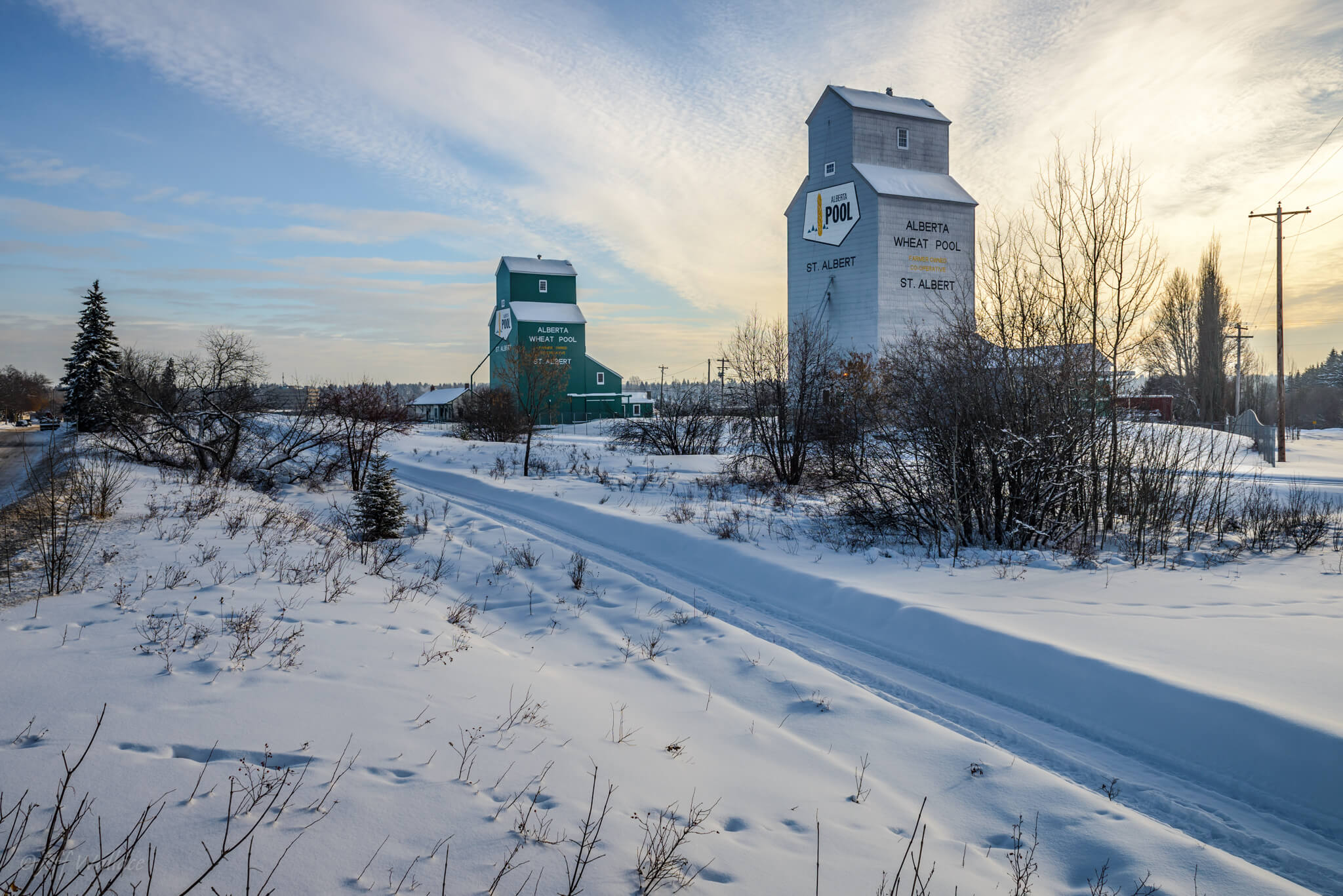
Canada has tried to promote immigration to maintain the fairly high standard of living, but in the previous decades less people are migrating to Canada, than during the 1950’s and 1960’s.
- relaxing immigrant policies and visa requirements to encourage migration
- Pro-natal goverment support to increase the birth rate eg. subsidies and parental leave programmes
- allow pensioners to continue working
China: One Family One Child Policy
Anti-natal population policy
China is world’s most populous country with more than 1.3 billion people in 2014. Representing 20% of the world’s people, China suffers from extreme overpopulation.
China became overpopulated since 1960 because of:
- social/cultural desire to have a son
- economical bonus: men could work in the field
- children considered to be social security
- politics: stronger China against America
- previously poor medical infrastructure- high infant mortality rate
- flood 1959-1962: 20 million died
In 1965 the birth rate had grown to 40 births per 1000 until politicians realised the growing problem and launched the One Family One Child Policy in 1979.
Positive consequences of the policy:
- better education and skilled workforce
- average fertility reduced to 1.7
- low urban poverty
Negative consequences of the policy:
- female foeticide
- forced abortion
- abnormal sex ratio/ imbalanced
- more divorce: desire to have a boy
- lack of working population to support old dependents
- girls abandoned, killed, in orphanage
Exceptions to the policy:
- Han-Chinese allowed a second child
- rural areas
- ethnic minorities
Germany: Pro-natal population policy
In Germany, the fertility rate is well below replacement level, having dropped to 1.38 births per woman in 2012. Birth rates have been falling for many years, and the youth plus the immigrants will be unable to support Germany’s ageing population.
For this reason, Germany has adopted several measures that attempt to encourage families to have more children:
- paid maternity leave and parental leave
- tax breaks to tax payers that have children
- eliminating fees for kindergarden
- free schooling

Japan: Population distribution in a densely populated country
With a population of around 130 million (2015), and a population density of 336 people per km² (2015), Japan is one of the most densely populated countries in the world.
Uneven population distribution
Sparsely populated rural areas: very few people live on the mountainous slopes in the centre of Honshu island and the south of Shikoku island, because of:
- Lack of flat land for cultivation
- Thin, infertile and acidic soils
- Extreme climate: long cold winters with heavy snow
- Remoteness and isolation: transport and communication are difficult
- Few jobs available (only in forestry/ primary sector)
Densely populated rural areas : many people live on the flat valleys and gentle slopes of Honshu and Kyushu islands because they:
- provide fertile land for cultivation and thus, have attracted many farmers
- attract commuters who work in the cities through the high standard of living and services such as out-of-town shopping malls and sports facilities.
Densely populated urban areas: many people live in towns and cities along the coast, especially on Honshu island, in the conurbation of Tokyo, Nagoya and Osaka; because of:
- flat land with mild winters
- good service provision like universities and technologically advanced hospitals and health facilities
- good transport facilities such as the Port of Tokyo to facilitate the import of raw materials and the export of manufactured goods
Canada: A Sparsely populated country
With a population of around 35 million (2015), and a population density of 3.87 people per km² in 2013, Canada is considered a sparsely populated country.
Canada is sparsely populated due to the following reasons:
- many mountainous areas eg. Canadian Rockies close to the west coast
- permafrost in the Northern areas (high latidtudes) so land is too cold for agriculture
- snow and ice make transport difficult, especially in less developed areas (ie. the inner provinces of Canada)
Canada: Population distribution
The population of Canada is clustered in the Southern areas; because, the cold Arctic climate makes cultivation impossible and it is rather unpleasant to live in those cold areas. Also, more people live in Eastern areas, since the West has mountainous areas such as the Canadian Rockies that are too steep to farm on easily and challenging for construction and transport.
Russia: Population decline
Russia has a population growth rate of -0.3%. This has been caused by factors like:
- high death rate of 13 deaths per 1000, particularly due to alcohol-related deaths
- low fertility rate of 1.6 children per woman
- high rates of abortion
- low levels of immigration
- underuse of health facilities, resulting in rising costs
- education cannot be sustained in all areas (particularly sparsely populated)
- resources not fully exploited, leading to lower GDP
- lack of workers may result in economic recession
- pro-natal population policies, eg. financial support for parents who choose to have a second child
- robotisation/development of tertiary sector to prevent lack of workers
Uganda: High population growth rate
Uganda has a population growth rate of more than 3% due to its high birth rate of 44 births per 1000 people per year. This has been caused by factors such as:
- low socio-economic status of women
- low educational levels, especially among females
- early marriage
- low use of contraception due to limited access and poverty
- political statements encouraging more babies as some areas in Uganda have a low population density
Problems of high population growth:
- Health sector faces human and infrastructural shortages
- Primary education could not be sustained in all areas
- Insufficient employment opportunities, especially for poorly educated
- Threatens agricultural modernisation as population pressure increases deforestation, soil erosion and land degration
- Pressure on resources, especially in urban areas
Solutions to reduce population growth:
- Widespread availability of contraception
- Universal access to education, jobs and health care and female emancipation
- Promotion of scientific and technical development (tertiary sector)
- Promotion of new modes of production (modernisation and commercialisation of agriculture)
- Growth with equity/sustainable development
For more information visit: Population growth rate in Uganda
Uganda: Youthful population
In 2014, 48.7% of Uganda’s population were young dependents under the age of 15.
- high fertility rate (many children per woman) and high birth rate
- high infant mortality rate encourages more births so some will survive
- children considered social and economic asset
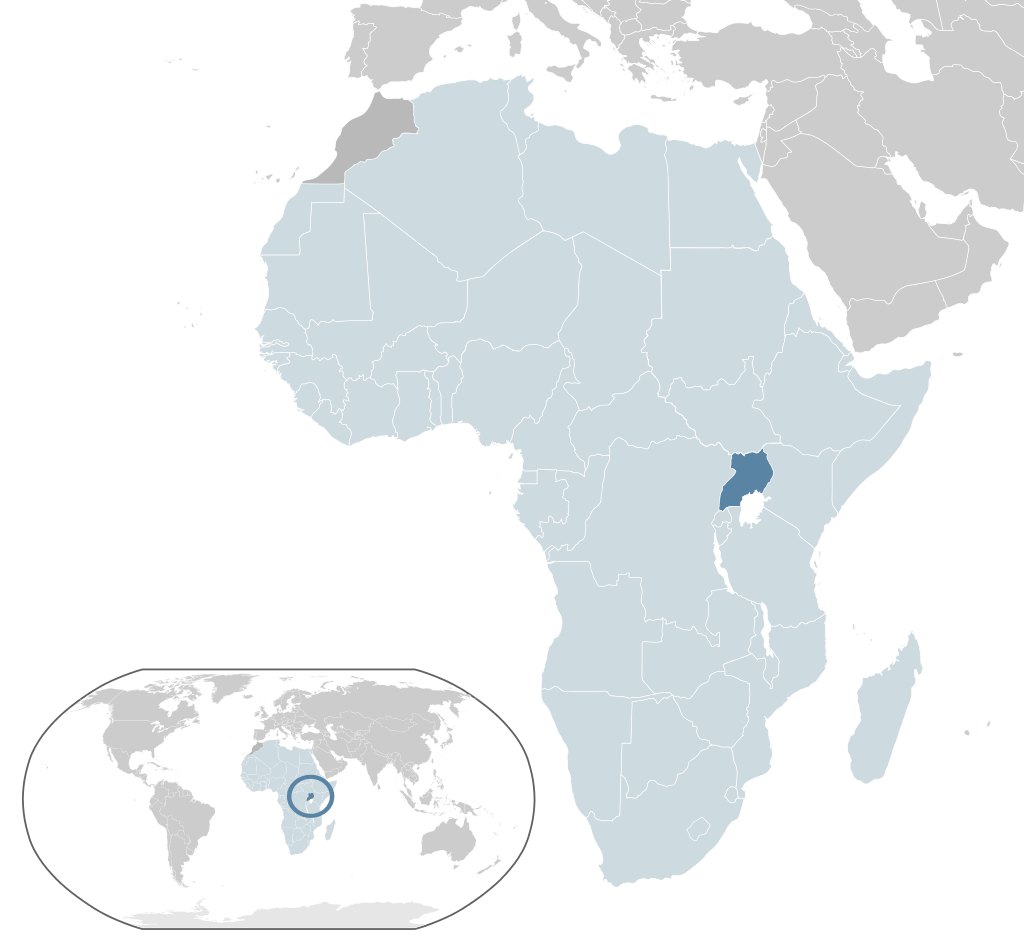
- few old dependents that have to be supported
- possibly a large workforce in future
- Overpopulation if growth is not regulated, resulting in overcrowding, construction of shanty towns, lower standard of life, increased pollution, depletion of resources and food shortages (which encourage deforestation resulting in soil exhaustion and lower yields), as wells as future unemployment
- Stress on tax payers to support young dependents and finance development of necessary infrastructure
United Kingdom: Ageing population
The percentage of elderly dependents (+65 years) has increased by 3% from 15% in 1980 to 18% in 2014.
- Elderly people can share skills and knowledge to train the younger generation
- Elderly people promote the development of grey economies (such as health care, specialised facilities, other facilities desired by elderly, etc.)
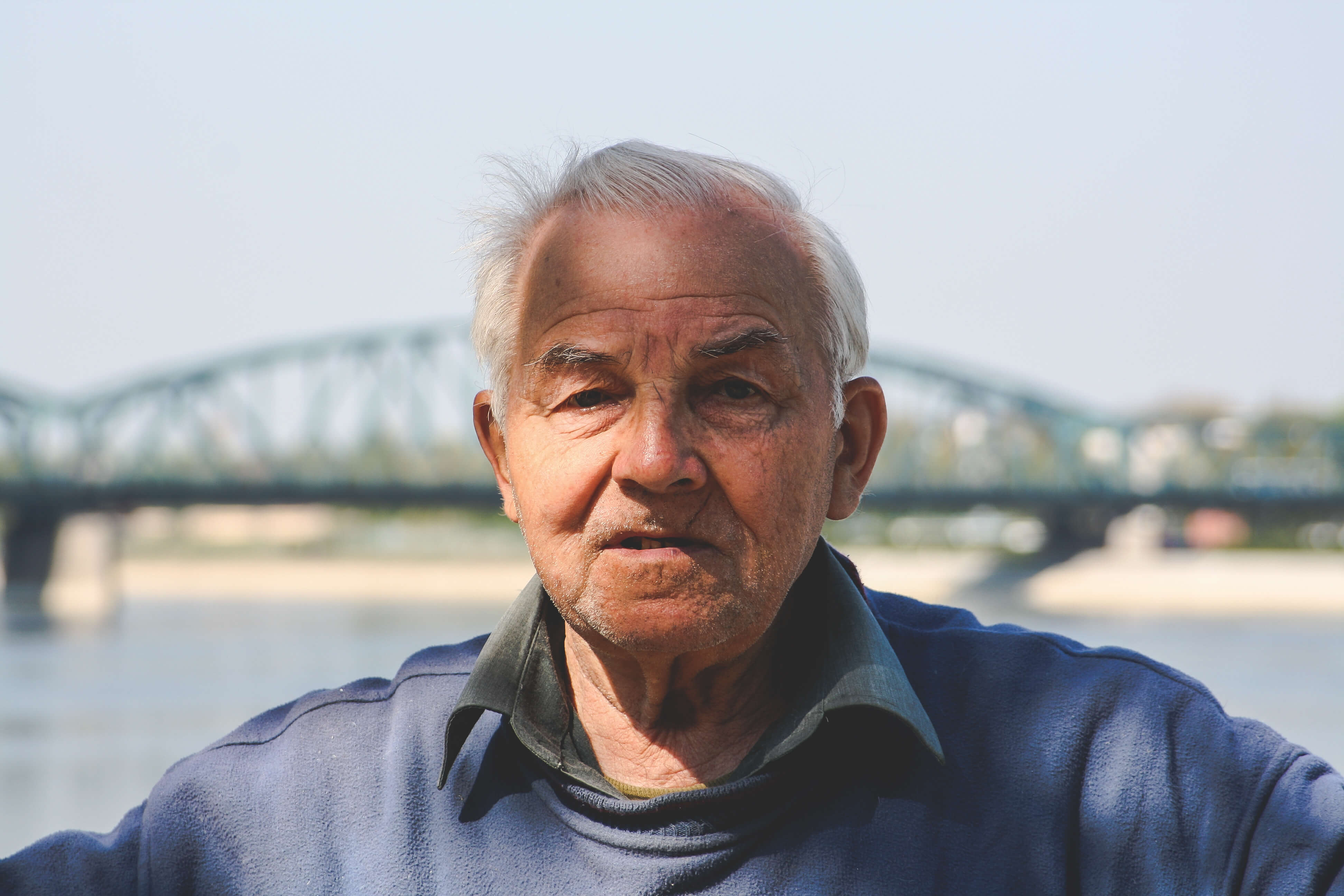
An increase in the percentage of elderly dependents is a strain on the working population as higher taxation is required to support the pensions of the elderly and to fund services such as health care and specialised homes. Government-funded pensions may have to shrink to cover everybody, leaving many people with less to spend (and some in poverty). In contrast, services for younger people , such as schools, are underused . These services may then have to close (eg. Woodly School in North Yorkshire which shut in 2012 due to a lack of students). As a result, some people may be left unemployed. Also, there are not enough economically active people, causing a lack of workforce and making it harder to defend the country.
HIV/AIDS: Botswana
Botswana is a landlocked country, north of South Africa. UNAIDS estimates that 400,000 people in Botwana live with HIV (Human Immunodeficiency Virus).
HIV/AIDS is transferred through bodily fluids. In Botswana, this occurs mainly during sexual intercourse or from mother to child during pregnancy. AIDS can also spread via contaminated blood transfusions or contaminated needle use (usually in drug users).
As a LEDC country Botswana is particularly vulnerable to HIV because of:
- poor sex education (people are unaware of the consequences of unprotected sex)
- low availability of contraception: many people have unprotected sex
- low status of women: women can not disapprove of unprotected sex, as they are perceived as child bearers
- low availabilty of medical treatment and testing: many people are unaware that they are infected so the disease spreads easily
- poverty: few people can afford anti-retroviral drugs to control the severity of the symptoms
Consequences of HIV/AIDS:
- High death rate and lower life expectancy, especially in economically active population
- Falling birth rate due to abstinence (fear of becoming infected), so people have less children
- Decreased labour pool reduces agricultural and industrial output, causing food shortages and poverty, thus preventing economic growth
- AIDS education programme: used mass media to reach 500,000 students and teach them about HIV/AIDS
- Offering free condoms to population
- Improvements in HIV testing and anti-retroviral drugs in government clinics
For more information visit: https://www.patana.ac.th/Secondary/Geography/IB/Population/AIDs%20Botswanna.htm
Syria to Germany: International Refugee Migration
Approximately 13 million Syrians are escaping the war between the Assad regime and non-state armed forces, 800,000 of which have come to Germany so far.
Many are fleeing from barrel bombings and shootings that have destroyed their houses and killed family members. Also, the refugees are attempting to avoid political persecution, as the goverment has arrested and tortured civilians who they think could be working against them. Others are emigrating to prevent being abused by radically religious groups such as IS, who have trained child soldiers and organised kidnappings and extrajudicial executions .
Many seek asylum in Germany, because the country provides economic stability as the current unemployment rate is low, and many sectors will be looking for suitable workers as Germany’s population continues to age. Besides, Germany is perceived as a country that protects and promotes human rights, offering food, shelter and language courses to refugees .
Rural Settlement (LEDC): Korodegaga village
Korodegaga village – near Addis Ababa in Ethiopia – consists of nine small hamlets with 1400 people in total.

The area was first settled in th 20th century because of:
- water supply from two rivers
- flat, fertile soil for cultivation
- extensive forests for building and firewood
Services provided include: a grain mill, mosques and schools. Villagers walk to the neighbouring towns of Dera and Bofa to access a local market and shops.
Braunschweig: Settlement size and service provision
Braunschweig is a district in Lower Saxony, Germany, with a population of around 250,000 inhabitants. The majority ofinhabitants live in the city of Braunschweig, which has the best provision of services (more than 20 schools, 5 hospitals, and a dense network of public transport, which includes, busses, trains and trams). In contrast, the village of Querum, which is also part of the district of Braunschweig, has a population of around 6000 inhabitants only has one doctor’s surgery, and one primary school, as it does not have the threshold population to support higher-order services.
Rural settlement (MEDC): Hötzum, Lower Saxony, Germany
Hötzum has a population of around 900 people. Its function is mainly residential, with most people working in the nearby cities of Braunschweig and Wolfenbüttel.
Map by: OpenStreetMap und Mitwirkende Source: OpenStreetMap Licence: CC BY-SA 2.0 Mapicons by: Nicolas Mollet Source: Maps Icons Collection Licence: CC BY SA 3.0
The area was first known to be settled by farmers in the 11th century and by the 18th century, the village had 4 arable farms, a shepherd and 6 horsefarms.
The area was initially settled because of:
- water supply from the Hötzumerbach and the Feuergraben
- flat, fertile land for arable and pastoral farming
- extensive forests which provided many logfelling opportunities
Currently there are very few services available (only a church, a community hall, a sports field and a volunteer fire brigade), but villagers can access the neighbouring village of Sickte for basic services and the cities of Wolfenbüttel and Braunschweig for all other needs.
Urban settlement: New York
Currently, New York is the largest city in the US, with a population of around 8 million people.
Site and situation:
- at a sheltered, natural harbour formed by Hudson river, which provided safe, deep anchorage and an extensive waterfront for the development of docks
- Hudson river allowed for transport and communication
- rocky ridge on Island of Manhatten allowed for easy defence
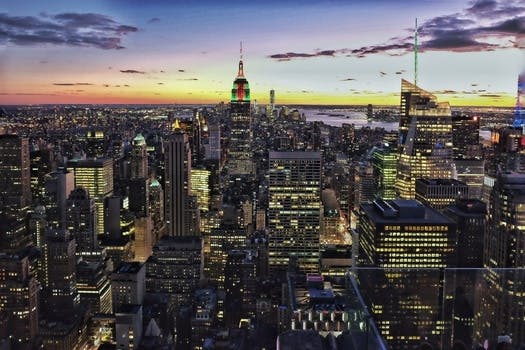
CBD’s:
- Downtown Manhatten: Wall Street (finance district of New York)
- Midtown Manhatten: tourist district, including Fifth Avenue (shopping), Broadway (theatre), hotels, Empire State Building, Chrysler and United Nations Buildings
Urban problems:
- Urban sprawl (middle class moves to the outer areas and lower-income families move into the inner city): due to population growth, relocation of businesses to suburbs for cheaper land and better accessibility
- Poverty and unemployment : around 1 million citizens receive welfare support due to unemployment and poor education caused by a decline in the clothing and harbour induestries in the 1980’s
- Urban decay and housing problems
- Racial conflicts due to a large number of immigrants that become trapped in poverty
- Air pollution as there are too many cars that release toxic exhaust fumes
- Traffic congestion as there are too many vehicles on the road and due to bottlenecks linking various New York Islands
- Water pollution from oil spills
Solution schemes:
- Reduction in air pollution by fitting catalytic converters to the exhausts of diesel city busses and developing a biodiesel plant in Brooklyn to distribute biodiesel to filling stations in the city.
- Reducing energy consumption by using more efficient street light and traffic lights, using renewable energy sources (wind, underwater turbines) to power homes and public buildings
- Waste management plan using barges and trains to export 90% of the city’s waste
Employment structure: Netherlands
Employment in the Netherlands is shifting more and more towards a service-based economy, while the proportion of people working in the primary and secondary sectors is at an all-time low.
While just under 7% of the workforce was employed in agriculture in 1970, this number has dipped to just under 2% in 2020, as machines and new technology have replaced the need for manual labour. Employment in industrial manufacturing and production has also fallen, in this case from over 35% to around 15% of the workforce. This comes as the country outsourced much of its manufacturing to China and East-Asia, and focussed more on highly specialist and complex services. Today, the country is home to several world-leading universities including TU Delft and the University of Amsterdam, and boasts many SaaS start-ups and software companies in urban areas like Amsterdam and Rotterdam. The growth of the tertiary sector may also be explained by favourable tax policies that encourage large service-dominated businesses to relocate to the Netherlands, along with a progressively more skilled workforce, as the number of university graduates has increased substantially between 1950 and 2020.
Squatter settlement in Rio de Janiero
Rio de Janiero is the second largest city in Brazil and has a population of 6 million people, of which nearly 17% – 1 million people- are favela-dwellers, living in the slums (called favelas) due to the extremely uneven distribution of wealth.

There are many problems for the shanty town inhabitants:
- Landslides: As the flat land in Rio de Janiero is inhabited by wealthier communties, most favelas are constructed on the mountainous slopes, where landslides are a common occurence (particularly due to excessive deforestation for firewood)
- Housing is made from scrap material which is vulnerable to flooding
- No clean water supply can lead to diseases such as typhoid, cholera or TB
- Sanitation is undeveloped or non-existent, eg. in Rocinha sewage flows down a large channel in the middle of houses. This allows disease to spread and may attract mosquitoes which are responsible for sicknesses such as malaria
- No proper electricity supply leads to dangerous tapping of electricity from the city’s power net
- Illegal activities and high crime rates due to many drug dealers, gangs and murderers
Slum upgrading strategies include :
- Increasing property rights (providing favela residents with titles to their home)
- Improving access to electricity and clean drinking water
- Local trash collection scheme: a bag of trash can be exchanged for a gallon of milk
- To reduce likelidehood of crime and improve education: toyguns can be exchanged for comic books
Change in land use and resulting conflict: Stuttgart
In the German city of Stuttgart, the rail network is being redesigned as part of the urban development project Stuttgart 21. The construction of new rail tracks means that some of the surrounding land which was previously used for housing and agriculture is now being used for transportation purposes. This has caused significant conflict between proponents and opponents of the projects. Those in favour of the project argue that it aids urban development, as the new transport network with a high-speed railway track improves economic and social mobility. Meanwhile, those opposing the project argue that it damages the environment by contaminating groundwater, destroys historical monuments and devalues private property in the vicinity of the new railway line. Additionally, they point that the project blocks other transport network extensions in the state of Baden-Württemberg. Because of these different perspectives, Stuttgart 21 is so controversial that it has sparked regular, sometimes even violent, protests in the city.
Volcano: Eyjafjallajökull, Iceland, 2010
Image from: http://volcano.si.edu/volcano.cfmvn=372020.
Eyjafjallajökull is a stratovolcano in Iceland, located approximately 125 km SE of the capital Reykjavik. It is found along the Mid-Atlantic ridge, where new earth crust is created.
Lava eruptions in March 2010 were followed by an explosive eruption on April 14th 2010.The lava flows damaged many homes and roads and services were disrupted due to evacuation measures.
Flooding was caused as glacial ice melted and torrents of water were flowing down the slopes of the land. Also, ash covered large plots of agricultural land, damaging the crops.
The massive ash cloud blocked air traffic in large parts of Europe for several days, leaving tourists and business people stranded at their destinations.
Immediate responses included an emergency evacuation of more than 800 people. Longterm responses are the reconstruction of damages houses and roads and research on the effect of ash on air planes.
Earthquake: Haiti, 2010
On the 12th of January 2010 a 7.0 magnitude earthquake struck Haiti, the epicentre of the quake being merely 15 km SW of the capital city, Port-au-Prince.

Stress building up along the conservative margin between the North American Plate and the Carribean plate was released by slippage along the fault running parallel to the plate boundary south of Port-au-Prince. The major earthquake was followed by several aftershocks up to a magnitude of 5.0 on the Richter scale.
The earthquake resulted in approximately 230,000 deaths (massive loss of life), destruction of 180,000 homes and around 5,000 schools. It left 19 million cubic metres of debris in Port-au-Prince and many services were badly disrupted or destroyed. A major secondary effect was widespread chlora due to polluted drinking water.
Haiti suffered so much because of the widespread poverty that left more than 80% of the population in poorly constructed, high density concrete buildings. Lack of stable goverment and medical infrastructure limited search and rescue efforts. Furthermore, the earthquake had a shallow focus, resulting in severe ground shaking, and the epicentre was located close to the densely populated capital.
Short-term responses to the earthquake included search and rescue efforts, as well as the the import of food, water and shelter from the USA and Dominican Republic. Longterm responses included reparation of three-quaters of the damaged buildings. Besides, migration was common as people moved away to stay with their families. Also, people received cash or food in exchange for public reconstruction work and the World Bank pledged $US100m to support the reconstruction and recovery.
Tropical storm: Katrina, 2005
Hurricane Katrina was one of the deadliest hurricanes ever to hit the United States.
How did Katrina form?

- Levees failed to resist the force of the waves, causing 80% of New Orleans to become flooded
- More than 1000 people lost their lives
- Half a million houses were damaged in the Gulf Coast region
- Services in New Orleans were badly disrupted: no electricity, gas and sewage system for 6 months after the event
- $ 10.5 billion of immediate financial aid for the victims
- In the first two weeks after the storm, the Red Cross had brought 74,000 volunteers who provided shelter to 160,000 evacuees
- International aid from over 50 countries
- Rebuilding levees destroyed by Katrina
Tsunami in the Indian Ocean, 2004
On December 26th 2004, a tsunami occured in the Indian Ocean.
The tsunami was the direct consequence of a 9.0 magnitude earthquake that was caused by tension along the subduction zone of the Indo-Australian and Eurasian plates. This rupture triggered massive waves that reached an altitude of up to 30m.
The tsunami resulted in 250,000 deaths, with 170,000 fatalities in Indonesia alone. 13 countries were affected by the powerful waves, and an estimated total of 2 million people have been displaced, as their houses have been destroyed.

Created by Cantus
Short term responses included search and rescue efforts in the local communities, while internationally, people sent donations to help those in need.
An early warning system has been developed to predict future tsunamis in the Indian Ocean.
Coastal problems and opportunities: Wadden Sea Islands
The Wadden Sea provides a large diversity of fish species and other seafood animals, making fishery an important industry for the local communities. Besides, tourism is well established in the area, with around 800,000 visitors annually on the Dutch island of Texel alone.
By Aotearoa (Own work) CC-BY-SA-3.0 , via Wikimedia Commons
However, the area is threatened by storm tides, particularly in fall and winter, which may cause floods that damage the unique ecosystem. Furthermore, the continuous eastward shift of the islands has eroded their westmost regions, endangering settlements such as West-Terschelling, which may submerge in future.
Coastal management strategies to protect the islands include dune grass planting and dune fencing. The newly planted grass traps and hold sand thereby reducing coastal erosion and encouraging the formation of new dunes. This makes the islands less vulnerable against erosion from storm surges.
Coral reef: Great Barrier Reef
The Great Barrier reef is located along the Pacific shores, where water temperatures are above 20°C. The reef grows in shallow areas (not more than 60 m deep) in the Coral sea, off the Australian coast, east of Cairns. It grows in clear water that is free of sediment so sunlight can pass through.

The Great Barrier reef is threatened by global warming, which increases coral bleaching. Besides, declining water quality (due to agricultural run-off from the rivers of North-Eastern Australia and oil from ships in discarded in the Coral Sea) pollutes the ecosystem. Also, overfishing destroys food chains and disbalances the symbiotic relationships. Furthermore, tourists may destroy parts of the reef when they go diving or reef-walking.
Management strategies:
The Australian government has made the Great Barrier reef a protected area by declaring it a marine park. The GBRMPA (Great Barrier Reef Marine Park Authority) is the ogranisation who looks after the reef and protects it from human threats while allowing sustainable development to take place. The Marine Park Authority gives out permits for fishing, diving and more and has boats patrol the area to prevent illegal activity. Tourists are educated about how their trip affects the reef and they are not allowed in certain sensitive areas. Also, fines of up to US$ 1 million can be forced on companies that pollute the fragile ecosystem.
Pollution in the North Sea
The North Sea is polluted by oil spillages from tankers in the Thames estuary washing out their tanks. As a result, oil clogs up the gills of fish, casuing them to die. Spillages also pollute the beaches along the British coast (eg. near Essex), which reduces the number of tourists. Besides pollution occurs through the disposal of untreated sewage from large urban areas such as Rotterdam, possibly possessing a human health risk along the Dutch coast. Also, pollutants from industrial waste in the Rhine river may be washed into the sea.

By Halava CC BY-SA 3.0
A spit: spurn head, holderness coast, uk.
Spurn head is a sand and shingle ridge that extends from the headland south of Easington. It has been formed along the Holderness coast under the influence of prevailing winds from the North which result in wave refraction. Subsequently, longshore drift transports the coastal sediments, which deposit in the sheltered mouth of the Humber estuary.
Spurn Head, Holderness Coast
Ynyslas Dunes, Wales, UK
The Ynyslas Dunes in Wales have been formed by deposition, which occured as energy of winds blowing from Cardigan Bay was reduced. Westerly onshore winds picked up dry sand from the wide beach at the estuary of the Dovey (Dyfi) river. Obstructions on the beach caused a sheltered area. Maram grass colonised dunes and trapped further sand.
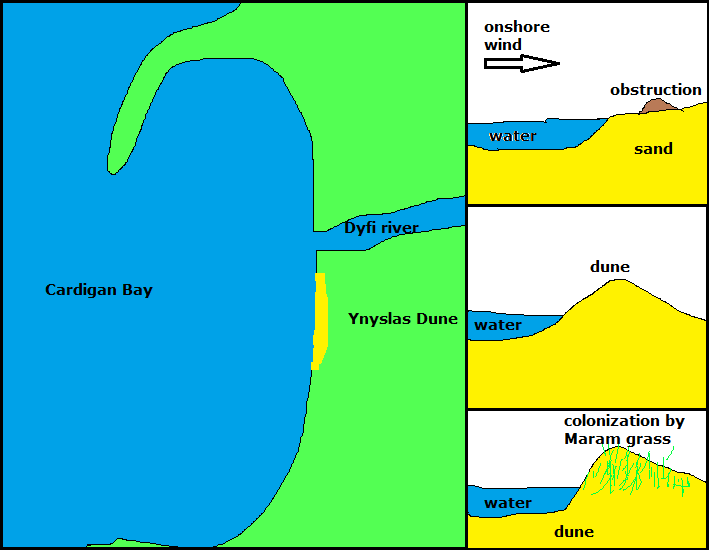
Bangladesh: Ganges-Brahmaputra Delta
The Ganges Delta in Bangladesh is the most populous river delta in the world. Around 30% of its population work in agriculture, as rice cultivation is well developed due to the fertile soils. Also, fishing is very prominent, as the distributaries are colonised by shrimps. However, the Ganges Delta is threatened by floods, especially from heavy rainfall during the monsoon season and icewater runoff from the slopes of the Himalaya.

Image of Ganges-Brahmaputra Delta from NASA
Water supply: colorado river basin.
The Colorado river originates from the Rocky Mountains, passing through 7 states before reaching Mexico. It is estimated that 40 million people rely on water from the 2,300 km long stream for domestic, agricultural and industrial purposes. Many dams and canals have been built to control this extreme demand; therefore, the Colorado river is one of the most controlled rivers in the world.

By Shannon, CC BY-SA 4.0-3.0-2.5-2.0-1.0
In 1922, the Colorado River Compact was introduced to divide the water supply between the states of the Upper and Lower Basin of the river, with each group being allocated 9.25 trillion litres of water each year. In 1944, a treaty was introduced to guarantee 1.85 trillion litres to Mexico.
Despite all these management agreements, problems over the river’s resources have arisen, because:
- River was commited to deliver 20.35 trillion litres per year, but only brought about 17.25 trillion litres anually
- Evaporation from lakes has remove 2.5 trillion litres, and even less during periods of drought
- Demand for water has increased, due to population growth and more irrigation for farmland.
Environmental problems:
- Alluvium becomes trapped behind dams (eg. Hoover Dam), damaging the delta and wetland ecosystem at the mouth of the Colorado river
- Salinity has increased in the lower basin, altering the ecosystem
- Reduction in the population of fish, shrimps and sea mammals
Resource management strategies:
- Reducing leakage from broken pipes
- Use of grey water in domestic homes
- Domestic conservation
- Improving irrigation (using drip irrigation) or growing crops with a lower demand for water
- Extraction water from ground water supplies
- Desalinisation of water from the Pacific ocean
(Information from: Greenfieldgeography )
China: Three Gorges Dam
The Three Gorges Dam is located near Yichang on the Yangtse River in China. It is approximately 180 m high and 2.3 km wide and has taken almost 17 years to construct.
The dam has protected 10 million people from flooding and its 32 generators provide energy for 60 million people (each generagtor produces as much energy as a small nuclear powerplant), enabling China to reduce its dependency on coal. It also allows shipping above the Three Gorges and has 6-folded the water traffic capacity. Also, the dam has created many jobs.

Model of the Three Gorges Dam
However, the dam meant that 1 million people had to be moved to accomodate the reservoir and power stations. The Three Gorges Dam also interferes with aquatic life, being a major threat to the White Flag Dolphin, which is already at risk from extinction. Furthermore, the large masses of silt transported by the Yangtse deposit behind the dam, which reduces the storage capacity of the reservoir. Besides, the dam lies on a fault line and could be badly affected by an earthquake.
Central European floods 2013
Extreme flooding in Europe began after heavy rainfall in May and early June 2013. Precipitation at the northern rim of the Alps exceeded 300mm over four days. This, along with an already high soil moisture from the wet spring weather, gave rise to severe flood discharges in the Danube and Elbe rivers. Many dykes failed due to the pressure from the water masses, worsening the situation. Flash flooding was recorded in Warsaw as a result of a heavy thunderstorm.
25 fatalities have been recorded due to the 2013 floods. Thousands of people were evacuated in Germany, the Czech Republic and Austria. The total devastation amounted to 12billion €, with crop losses acounting for 1billion € worth of damage. River traffic was blocked for several weeks and many railway lines were closed due to flood damage and landslides.

By Honza Groh (Jagro) (Own work) CC BY-SA 3.0
Short-term responses included search and rescue efforts and emergency evacuations. Members of the Red Cross built shelter camps for displaced residents. Military soldiers established sand bag walls to control the Elbe and Danube rivers and protect buildings in areas such as Dresden and Passau. In some rural regions, levees were destroyed to allow the water to escape onto flood plains and prevent uncontrolled damage downstream.
The governments of Germany, Austria and the Czech Republik are investigating into longterm measures to reduce the aftermath of future floods. Suggestions include reducing construction activities on flood plains and creating spillways to divert part of the flow in case of high discharge. Some dykes will be raised and stabilised to protect particularly vulnerable regions.

2011 East African Drought
The 2011 drought in Ethiopia,Djibouti, Kenya and Somalia was caused by the La Nina phenomenon, an ocean current in the Pacific which increased the intensity of westerly winds in the Indian ocean, pulling moisture away from East Africa and towards Australia and Indonesia.
- Most crops failed and 60% of cattle perished due to a lack of water
- Severe food crisis: lots of people suffer from starvation or malnourishment
- Thousands fled to refugee camps in hope of food aid from other countries, but many people died of starvation or disease en route
India: Thar Desert, Rajastan
The Thar Desert is dry as hot air rises at the equator and cools. The moistureholding capacity decreases; it rains. As the air moves away from the equator by advection, it cools and sinks at the tropics (where the desert is located). The sinking air warms up and its moisture-holding capacity increases, so the area is very dry. With the low humidity, there are few clouds to reflect the sunlight and as there is no evaporative cooling, most of the sunlight warms the ground surface, creating hot temperatures.
Vegetation:
Low precipitation and temperatures of up to 53°C result in scattered vegetation that has adapted to the extreme conditions. For instance, the Ber tree has a rapidly developing taproot system to survive in drought conditions. However, exept for a few trees, the desert is home to thorny bushes and shrubs. These have spiky leaves to reduce rates of evapotranspiration. Xerophilious grass has a small surface area to reduce water loss. Some species als remain dormant during long dry spells.
The Thar Desert is threatened by excessive irrigation which leads to salinization. Therefore plants can not take up water from th soil, as the soil has greater concentrations of solute than the roots. Soil quality is also decreasing as manure is used as an alternative fuel for firewood rather than to sustain nutrient-rich, fertile soils. Furthermore, population pressure results in overcultivation and overgrazing, especially around cities like Jodhpur and Jaisalmer, damaging the natural vegetation. The desert environment is also threatened by tourist attractions such as dune bashing. The toyotarisation disturbs animals, kills vegetation and creates dust stroms. Also, tourists may dump waste in the desert, poisoning flora and fauna.
Tropical Rainforest in Borneo
Borneo has experienced the fastest tropical rainforest clearance in the world. While 94 % of the island’s land was covered by forest in 1950, less than half of it remains today (44.5% in 2010).
The rainforest has been cleared for the following reasons:
- to boost Malaysia’s economy by exporting timber for furniture and paper production
- population pressure : Indonesia’s transmigration programme caused people to move from overcrowded islands as Java to relatively sparsely populated areas as Kalimantan
- to build palm oil plantations
- HEP : forest clearance to provide space for a reservoir in Sarawak (Malaysian Borneo)
- coal mining in Kalimantan

By T. R. Shankar Raman (Own work) CC BY-SA 4.0
Effects of clearance:
- atmospheric pollution – burning of forest releases enermous masses of ash and smoke
- global warming due to the release of Co2 from burning forests and reduction in carbon sink (as burnt trees do not absorb CO2 by photosynthesis)
- loss of biodiversity : loss of plant species through deforestation
- destruction of habitat: some species (eg. orang-utans) are unprotected due to lower forest cover
- loss of soil fertiliy : soil degration due to soil erosion and leaching
- Afforestation/reforestation and selective logging
- Promoting rainforests as destinations for ecotourism , enabling the undisturbed environment to create a source of income for local people without it being damaged or destroyed
- World-wide initiatives including debt-for-nature swaps: debt relief for retaining rainforests
Tourism in Lanzarote
With more than 2 million visitors annually, tourism represents the major pillar of Lanzarote’s economy

- Climate: average water temperature of 20°C, and average air temperature of 21°C, very little rainfall and 8.5 hours of sunshine each day
- Numerous luxury and package hotels on beaches eg. Playa Blanca
- Jameos del Agua: an underground lagoon in a lava tube
- Timanfaya National Park
- El Golfo: an emerald green lake situated at the base of a crater on the west coast of the island
- Cueva de los Verdes
- Cactus Garden by Cesar Manrique
- Since the 1980’s , package holidays have created a source of income to promote the development of basic infrastructures, such as the extension of the airport runway to allow for international flights
- Employment opportunities in tourist industries eg. hotels, gastronomy, transport, tour guides
Disadvantages:
- Import leakage to fulfil tourist demands such as food, because only few types of vegetation can thrive on Lanzarote’s arid, volcanic soils
Ecotourism in Belize
With 245 000 tourists annually, in 2007, over 25% of all jobs were in tourism, which made up over 18% of Belize’s GDP.
Primary and secondary attractions:
- Mangrove swamps
- Mountain pine forests and tropical rainforests
- Archaeological sites eg. Mayan civilization
- Wildlife reserves eg. Coxcomb Basin Wildlife Sanctuary
How tourist demands are managed:
- Belize Tourist board, Ministry of Tourism and private sector
- Community Baboon Sanctuary to preserve forest habitat and howler monkeys: sustainable farming to increase yield and services for tourists
Problems/Threats:
- Waste dumping and financial leakage due to cruise tourism
- Overfishing
- Coral damage and eutrophication of freshwater from fertilizer runoff
- conserve world heritage site of barrier reef
- increase knowledge of country’s ecosystems through training programmes
- reduce concentration of tourists in specific areas
- support planning and development of a buffer zone
- stricter regulations on cruise ships to reduce waste dumping
- persuade cruise tourists to spend more time on land
Maldives: Tourism as a development strategy
The Maldives are located south-west of India in the Indian ocean and consist of more than 1000 islands.
Tourism accounts for 28% of the Maldives’ GDP and more than 60% of its foreign exchange receipts.
Natural attractions:
- sea-sun-sand combination
Man-made attractions:
- luxury resorts and suites eg. Taj Exotica Resort and Spa on South Male Atoll
- Grand Friday Mosque in Male attracts religious tourists
- Water provided by desalination of sea water
- Energy produced by generators
- Waste dumped in landfill sites or sea (this problem is addressed by the compulsory installation of incinerators, bottle crushers and compactors in all resorts)
- Import leakage due to poor agricultural potential and no economic minerals
- External shocks: sea-level rise, tsunamis, terrorism, etc.
- Depletion of natural resources and climate change
How tourism in damaging the natural environment:
On the Maldives, tropical coconut palms are destroyed for building hotels. Consequently, the ecosystem is threatened as food chains are destroyed or disrupted. For example, lizards loose their natural habitat. Animals are also scared away by traffic. Besides, a ferry from Male every 10 minutes pollutes the seas, threatening the corals. The reefs are also destroyed as tourists take samples home and leave litter on the beaches that may kill reef fish. The atmosphere is polluted by the incineration of waste.
- Encourage linkage between tourism and other sectors as construction, manufacturing and transport (multiplier effect)
- Encourage foreign investment in the development of new resorts
- Increase employment
- Encourage solar and wind power
Global warming management: Maldives
The Maldives are located in the Indian Ocean, only 1,5 m above sea level on average, with 80% percent of the land below 1m.

By Giorgio Montersino on Flickr Licence: CC-BY-SA-2.0
Global warming is a substantial threat to the Maldives, as an increase in temperatures leads to the melting of icebergs, causing sea level rise that may submerge the island group.
The Maldivian Government has built a 3m high sea wall that surrounds the island of Male, to protect it from flooding and preserve its beaches. The sea wall was funded by the Japanese government.
Also, the Maldives plan to be a carbon neutral country by 2019. In other words, they try to avoid adding Co2 to the atmosphere, as carbon dioxide is considered to be responsible for global warming. This should be accomplished by encouraging the development of solar and wind energy.
Fuelwood in Mali:
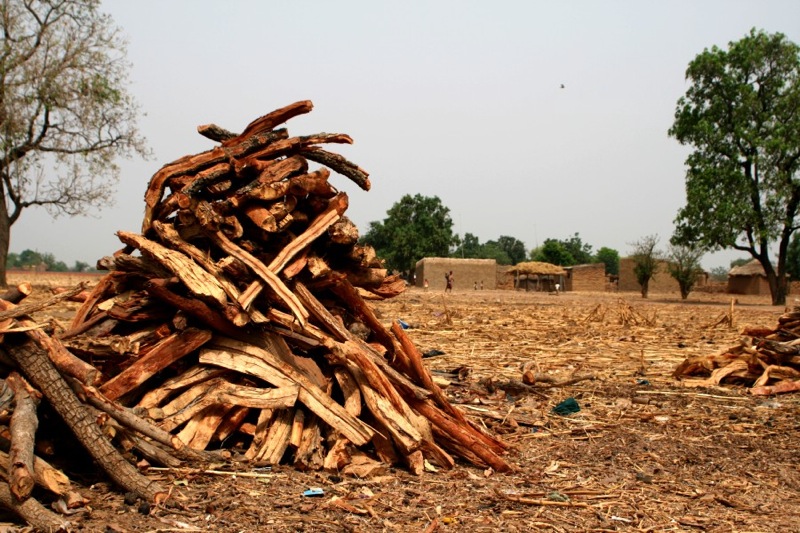
Image from: Flickr by M Poudyal on 6. April 2007
For local people: The large-scale deforestation that is required to supply for sufficient energy is problematic, as this energy source is likely to run out if not enough trees will be planted. Besides, deforestation requires people to travel farther to collect enough fuelwood. Deforestation also exposes the soil (as trees cannot trap it) so soil erosion is likely to occur. Furthermore, the burning of fuelwood releases toxic gases which may be trapped in the houses, causing breathing problems or even carbon monoxide poisoning.
Environmental: The widespread deforestation has reduced the humidity of the already dry region, as less plants release water by evapotranspiration. Also, less roots are anchored in the soil, so the soil is more likely to be eroded. Furthermore, soil salinization is increased, as the cut-down trees no longer provide shade for the soil and the hot temperatures-caused by the desert climate of the Sahel- draw water out of the soil. As an increased soil concentration is poisonous to a large variety of plant species, the natural vegetation will be less likely to grow, and crop cultivation may be hampered.
Two other case studies on fuelwood:
http://geography-student.blogspot.de/2012/06/fuelwood-issues-with-usage-possiblities.html
Geothermal energy in Iceland:
Iceland is located along the Mid-Atlantic ridge, a divergent boundary where heat from the core of the Earth rises to the surface. The energy produced from this heat equates to around 30% of Iceland’s electricity production.
Cold water is pumped down to the igneous rock layers, where it is heated by contact with the hot rocks. The hot water is then piped up and the heat energy is converted to electricity.
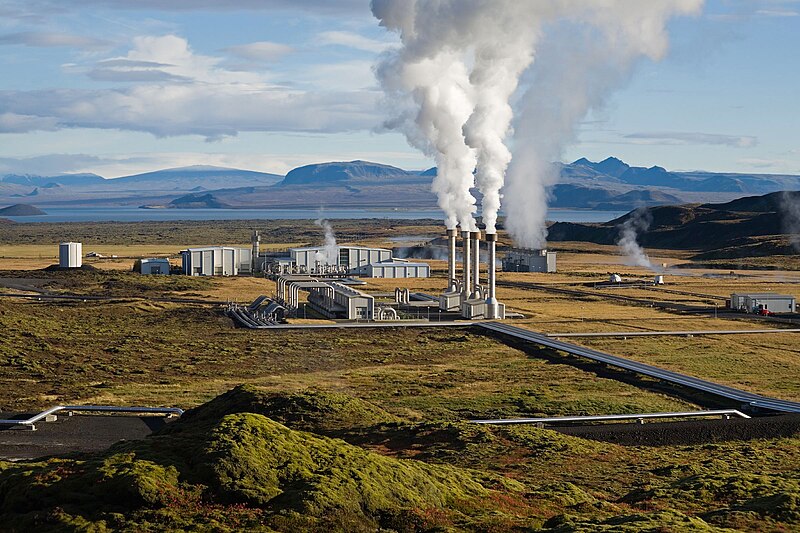
Positive aspects:
- emission-free
- sustainable and potentially infinite
- 3/4 of the population live near geothermal sources (in the south-west of Iceland, near Reykjavik)
Negative aspects:
- obstruction that consumes land
- visual pollution
- regional limitations
- may release dangerous underground gases
(More information on: http://www.markedbyteachers.com/gcse/geography/iceland-geothermal-energy-case-study.html )
Solar power in India
India is particularly suitable for solar power due its large mass of land and its tropical location. Besides, solar power is considered a successful means to address India’s development problems.
Advantages of solar power:
- safe and pollution-free
- great potential in rural areas that are isolated from the national electricity grids eg. Dharnai village
- can be used effectively for low power uses as central heating
Disadvantages of solar power
- ineffective in high latitude countries and cloudy areas
- high initial capital input
- less effective for high output uses
Future plans:
- establishing an airport that relies solely on solar power in Cochin
- developing 50 solar cities
- creating world’s largest solar power station in Madhya Pradesh
Wind energy in Germany
Around 9% of the energy produced in Germany comes from wind turbines located both on shore and off-shore (in the North Sea and Baltic Sea).

Wind farms have been built in Germany starting from the 1990s, when awareness of Co2 as a contributing factor to global warming increased.
Primarily, the government fostered the production of onshore wind energy, as technical challenges prevented off-shore farms. The onshore farms were recognised as a cheap form of renewable energy, which does not contribute to air pollution, global warming or acid rain. On the other hand, people did not want to live near wind farms, as these were considered a form of visual pollution.
This issue was resolved by the development of off-shore farms, which are also more productive as there is more wind out at sea. However, the required network capacities for transmitting the power generated in the North Sea to the large industrial consumers in southern Germany have not yet been constructed.
Energy Supply in China
China sources most of its energy from non-renewable sources, with coal-powered plants accounting for roughly 65% of the country’s energy supply in 2020, according to data from the International Energy Association . Renewable sources accounted for another 30% of the country’s energy mix. In China, hydropower is the most-widespread source of renewable energy, and the country boasts many dams, including the Three Gorges Dam, which is the largest dam in the world. Wind, nuclear energy and solar power are also becoming more important as the country aims to transition to cleaner and more efficient energy sources, following the president’s call for an energy revolution.
Plantation: Rubber farming in Malaysia
Plantations are large farms producing a single cash crop (monoculture).
- tropical climate (21-28°C, around 2000mm rainfall)
- Chinese and Indian labour imported to increase labour force
- location: lower mountain slopes forming the backbone of Malay peninsula; near railway lines and main port

- Planting in germination beds
- Tapping 5-7 years after planting to collect latex
- Latex is coagulated using acid
- Raw rubber washed and rolled to remove acid ad moisture
- Rubber is dried and smoked for stabilisation
Extensive commercial farming: Canadian prairies
- deep, fertile Chernozem soils
- large expanse of flat land (nearly 2 million square kilometres) to grow wide variety of cereals such as wheat, oats etc. in the provinces of Alberta, Manitoba and Saskatchewan
- able to use large machinery for harvesting
- below zero temperatures in winter break up soil to allow ease of ploughing
- good railway link to Great Lakes allowing export of cereal crops
Human inputs:
There is a very heavy reliance on machinery for ploughing, planting, spraying the crop and harvesting. A large proportion of expenditure goes toward machinery, chemicals and other equipment. Most of the work can be handled by just a few workers using machines such as combine harvesters and harrows. One or two extra helpers may be hired during planting or harvest time.
from: http://www.geoforcxc.com/economic-activities/wheat-farming-in-canada/
Intensive farming: Rice cultivation in Ganges Valley
- Alluvial (silt) soils
- Large labour force
- Temperatures: >21°C
- Monsoon rainfall and dry spells

- Bufallo manure for fertilising
- Weather conditions such as flooding or drought may threaten rice yields
- Monopoly of land: best farmland is owned by few wealthy people, other land owners struggle to cultivate rice in more difficult conditions, especially as they do not have the technology to increase soil fertility
- Little use of machinery and modern methods
- Food shortages: Overpopulation results in overcultivation on flood plains, leading to soil exhaustion and lower yields
Information from: http://geographyfieldwork.com/RiceFarm.htm
Pastoral farming in New Zealand
New Zealand is well known for its agricultural output from sheep farming and dairy farming.
Sheep farming inputs:
- Sheep were brought to New Zealand in the 1800s by British sailors. Initially, the sheep had few natural enemies, so their numbers increased rapidly.
- The sheep are also well adapted to the mild climate and the rich pasture, particularly on the mountainous slopes of South Island.
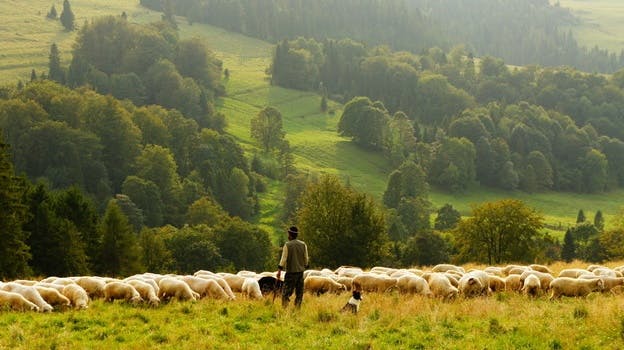
- Shearing to obtain wool
Sheep farming outputs:
- Meat: beaf and veel
- Sheep manure for fertilizing
Dairy farming inputs:
- Mild climate with high rates of precipitation
- Alluvial and volcanic soils on the flat planes of New Zealand
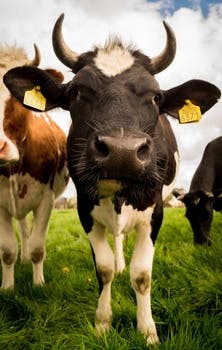
Dairy farming processes:
Dairy farming outputs:
Subsistence farming: Shifting cultivation in Amazon Rainforest, Brazil
Shifting cultivation is an agricultural practice in which areas of land are cultivated temporarily and abandoned as they become infertile. This allows the land to revert to its natural vegetation and is a sustainable farming technique. Shifting cultivation is mainly practised by indigineous tribes.
Subsistence farming in Lesotho
Lesotho is a landlocked country that borders South Africa. It relies heavily on subsistence farming, with an estimated 86% of the country’s population growing their own crops and maintaining livestock.
Subsistence farming is common in the lowlands northwest of Maseru, where the terrain is flat and thus suited for the cultivation of crops. In mountainous areas, many farmers also raise livestock to compensate for the lower yields from cultivation on mountain slopes.
Additionally, subsistence farmers in vast parts of Lesotho raise livestock, which can be sold during drought years when crop yields are low. This provides food security for the farmer’s family.
Food shortages in South Sudan
In South Sudan, nearly 4 million people are severely affected by food shortages.
- Drought: Long-term decline in rainfall in southern Sudan (by 20% since 1970s)
- High population growth (4% in 2013) increases demand for food, so unsustainable farming practices such as overgrazing and overcultivation are used, resulting in land degradation and soil erosion
- Reliance on food imports from neighbouring countries: Uganda, Kenya and Sudan
- Civil war between government and rebel forces disrupts planting and harvesting and insecurity along transport routes has hampered the delivery of food and other humanitarian supplies
Water supply in Puglia, Italy
Puglia is one of the most water-scarce regions in Italy, and has very few fresh streams or natural rivers. Its aquifers are vulnerable to contamination by seawater, and so the area’s inhabitants b uilt a large aqueduct to tap into the fresh drinking water from an underground spring in the Campania region , located more than 160 km away.
Today, cities in the Puglia region (such as Bari) still receive some of their water for domestic use from this original aqueduct. However, precipitation in the Campania region has become less frequent in recent years, and so less water is draining into the aquifer that feeds the acqueduct.
Therefore, Puglia also gets around 250 million cubic meters of water every year from the neighboring region of Basilicata . The local authorities have even considered piping water in across the Adriatic Sea from Albania, to help the region cope with supply shortages.
Soil erosion in Nepal
25% of Nepalese forest was removed between 1990 and 2005 and this trend continues at a rate of 3% per year.
Causes of land degradation in Nepal:
- Deforestation for fuelwood exposes soil to heavy monsoon rainfalls as there will be less vegetation to protect it, causing it to be washed away by extreme surface runoff. Besides, soil is not held together by tree roots, so it can be eroded by icewater runoff from melting glaciers.
- Soil dries out in areas of low rainfall and strong winds can then remove the loose particles
- Agricultural mismanagemnet: poor farming practises such as overcultivation and overgrazing (which deplete the soil’s nutrients) damage the ground vegetation and result in the compaction of topsoil
- Soil pollution through excessive use of persticides poisons bacteria and fungi and thereby disrupts symbiotic relationships

- Crop rotation prevents depletion of nutrients and replenishes soil fertility
- Contour ploughing rather than ploughing up and down the slopes to prevent rapid run-off, gully formation and loss of soil
- Fuelwood conservation: replacing trees where deforestation has taken place or is going to occur
- Environmental education: restrict tourist visits and demand larger fee for use of heating and cooking facilities; environmental education in schools
Transport risks and benefits: Expansion of Heathrow
Discussions about an expansion of Heathrow Airport, Europe`s busiest airport by passenger traffic, arose in 2006, and still, no final decision has been made, as supporters and opposition have been arguing about the benefits and disadvantages for 10 years.

Benefits of an expansion:
- Enhancing economic growth in the UK: Heathrow functions as a major transport hub for both business travellers and tourists, transporting around 70 million passengers annually
- Benefits for financial services industry in London and other independent firms eg. inflight catering, security services
- Better connectivity to other international cities, as more destinations can be scheduled
- Waiting times would be reduced as the airport operates at a lower capacity
- Construction provides up to 100,000 jobs
Disadvantages of an expansion:
- Increase in emission of greenhouse gases from additional flights
- Community destruction: removal of 4000 houses to make space for a runway
- Increased noise and air pollution in West London due to an increase in flights: roaring airplane engines and their exhaust fumes
- Impact on wildlife
High technology industry: Cambridge Science Park
Cambridge Science Park is a Europe’s largest centre for commercial research and development. It is located near Cambridge in the United Kindom, as Cambridge University provides a large supply of expert labour and allows for the sharing of technology. Besides, a large plot of land (152 acres/61.5 hectares) had been available for a low cost, as the facility is located outside of the urban area around London. Nevertheless, good transport facilities exist, including the M11 motorway link to London for the export of finished products and London Stansted International Airport which allows for worldwide trade.
Manufacturing industry: Pakistan’s Iron and Steel Industry
- flat, cheap land available at Pipri, near Gharo Creek
- near Port Qasim, which has a natural harbour to import raw materials and export steel
- close to market: steel-using industries in Karachi, such as tool making
- energy source from Pipri thermal power station and Karachi nuclear power station
- availability of cheap labour from Karachi
- along a railway: Karachi-Pipri-Kotri and metalled roads
- economic assistance from USSR: technical expertise and capital
- water required for making steel brought from Lake Haleji
- heating of ore to separate iron
- burning coke
- rolling into sheets and cutting into lenghts
- cast iron and pig iron
- gases: sulfur dioxide, carbon dioxide, nitrous oxide, hydrogen sulfide
- noise pollution from machinery disturbs wildlife
- visual pollution due to large, ugly factory buildings
- air pollution from burning iron ore, which releases carbon dioxide
- water pollution from contaminated cooling water, scrubber effluent and ships supplying raw materials
- depletion of freshwater supplies due to excessive requirement of water in production
- risk of fire and explosions
MNC: MC Donald’s
MC Donald’s is a company at the forefront of globalisation, with more than 35,000 outlets in 121 countries world wide. Founded in the United States in 1940, the company began as a barbecue restaurant operated by Richard and Maurice McDonald. Mc Donald’s employes nearly 2 million people to sell fast food.
- Each new store that is build creates jobs (eg. opening of Mc Donalds at Kennedybrücke in Vienna created 30 new jobs)
- Mc Donalds is involved in youth sports, local charities, and other inspiring events by donating via its charities.
- Salaries vary per country, and are generally low
- Sometimes considered to have poor working conditions
Facebook: A Transnational Corporation and its global links
Facebook is the biggest social network and social media platform in the world, connecting more than 2.8 billion people in the world.
Facebook has close links to businesses all of over the world, as it not only owns the messenger service Whatsapp and the social media platform Instagram, but also offers advertising space through its Facebook Ads service, and allows retailers and people to sell and trade goods in its market place.
In the past, Facebook has also come under fire for data partnerships with other TNCs including, but limited to, Amazon, Microsoft, Yahoo and Spotify. However, amidst privacy concerns, the company has had to reduce the strength of its global links, and is instead shifting towards a slightly more localised global approach.
Nonetheless, Facebook continues to maintain and develop strong global links through mergers and acquisitions, its headquarter location in Silicon Valley near other high-tech, and software firms, and its relationships with goverments and business networks all around the world.
Nike: A multinational company and its impact on less developed countries
Nike is a global sportswear company headquartered in Oregon in the United States. The company employs around 75.000 people around the world, with an additional 500.000 people working for companies to which Nike subcontracts most of its manufacturing in Eastern Asia.
Benefits for LEDCs:
- Nike factories create new jobs in countries like China, Vietnam, Thailand and Indonesia, allowing poorer people to earn a wage. The standard of living for many people improves, increasing the ability to access food and quality housing.
- Nike has invested in and promoted the development of transport infrastructure in the areas near the factories. Better roads make it easier for the population to get around, and this has a positive ripple effect on other economic activity.
- Poor health and safety standards are a major threat to people employed in the factories.
- Short-term contracts and payment below the national living wage also have a devastating impact on the local community. For example, in one Cambodian factory that produced apparel for Nike, several women collapsed after working 10 hour days, six days a week , and they reported feeling hungry and exhausted.
- Natural resources such as oil are being overexploited, as they are required for manufacturing. This has a negative impact on the local environment.
- Factories are often footloose. This means Nike could relocate to another less developed area if the local conditions or government policies are deemed unfavourable – with a devastating impact on employment and the local economy.
You can find out more about Nike and its impact on LEDCs here .
- Click to share on Facebook (Opens in new window)
176 thoughts on “ Case Studies ”
June 6, 2024 at 7:19 am
how can i get this pdf
June 6, 2024 at 9:24 am
Hi, I sent you the PDF
May 29, 2024 at 9:32 am
hi thanks so much for providing this, it’s going to be such a huge help for geo this year do you mind sending a pdf copy
June 6, 2024 at 9:23 am
Sure, sent you the PDF
May 2, 2024 at 6:48 pm
Could you also please send me the pdf? 🙂
May 1, 2024 at 3:26 pm
Can you send me a PDF file? I really need this urgently, I have my paper 1s tomorrow and I want to print this out to help me!
May 2, 2024 at 11:11 am
Hi Sunny, I’ve sent you the PDF. All the best for your Paper 1 tomorrow.
May 2, 2024 at 4:52 pm
Hi, I will have my paper 1 tomorrow, what topic did you get??
May 1, 2024 at 8:02 am
hi thanks so much for providing this, it’s going to be such a huge help for geo this year do you mind sending a pdf copy 🙂
May 2, 2024 at 11:12 am
Should be on its way 🙂
April 28, 2024 at 12:07 pm
do you have case studies on river formations as well (ex: levees, canyons, v shaped valleys etc) and coast formation (ex: spit, bars, etc)
May 2, 2024 at 11:32 am
Hi ella, There is a case study on the formation of a spit: Spurn Head, Holderness Coast, UK on this page. as well as the Ganges delta. As far as I am aware, you only need case studies on the opportunities presented by a river/area of coast, the associated hazards and their management in the current CIE IGCSE syllabus. Best, Carina
April 28, 2024 at 12:03 pm
thank you. can i please have a pdf. also, how can i memorise all these before the test in 3 days??😭
May 2, 2024 at 11:14 am
Sure, sent it to you. I’m sure you’ll do fine – if you know the core stuff well, just focus on memorising locations/place specific info and I’m sure you’ll do fine. Most examiners don’t bother to fact check what you write anyway, so if in doubt, write what you think you remember and you might still get a point even if you’re somewhat off.
April 24, 2024 at 12:03 pm
Hi can I have to pdf copy of this. Also do you have any tips for memorising the case study
P.S Keep up the fantastic work its much appreciated 🙂
April 24, 2024 at 7:09 pm
Thanks Johnathon, I’m glad you find it helpful. I’ve sent you a PDF.
As for memorising the case studies: If you know the core material well, all you need to really remember is a place-specific reference, or something specific to that location. For example, if you have a case study on flooding, and you know a little bit about the general area where the flood occurred, you can quite easily deduce that houses may have been damaged or destroyed, railway lines and other modes of transport blocked, etc. Then all you’d have to remember is some specific fact related to the flood. What really helped me was having 2-3 specific things I knew about the location already, so I didn’t have to memorise one specific fact and hope that I remember. For example, for the Central European floods I knew (because I saw this on TV at the time) that a dike near the town of Deggendorf broke, and water rose to a record-breaking 8 metres causing the town to flood, while the Austrian stretch of the Danube saw all shipping halted. So having some kind of personal connection to or interest in the location of the case studies really helps.
Apart from that, I would just practice with a lot of past papers, and check my answers against the mark scheme. If you do 1-2 case study questions a day, you become quite good at them quickly.
Best wishes and good luck with the case studies Carina
April 19, 2024 at 12:23 pm
Please can you kindly send a pdf copy of the case studies and notes? Thank you
April 24, 2024 at 6:58 pm
Sent it to you 🙂
April 16, 2024 at 5:10 pm
do you know what the case studies 7 marker questions could be in IGCSE CIE geography 2024 may/june
April 24, 2024 at 7:27 pm
Hi Josiah, I don’t know what will come up, but my guess is something on ageing population, urban land use, coral reefs, energy use in a country, and a specific agricultural system or deforestation. Hope this helps. Best wishes, Carina
March 22, 2024 at 4:54 pm
Hi Carina! i’m new to teaching the course and after the first assessment with my students I realise they are struggling with the case study questions. Would you allow if I share these as notes with my students? If yes, may i request for a pdf, thank you so much.
Like Liked by 1 person
March 23, 2024 at 10:39 am
Hi Nikhat, Sure, feel free to share the notes with your class. I’ve sent you the PDF as well. All the best teaching the course!
March 21, 2024 at 11:27 am
can i have a pdf copy plssss
March 23, 2024 at 10:38 am
Yes, sent it to you.
March 16, 2024 at 11:33 pm
Please can you kindly send a pdf copy of the case studies? Thank you.
March 17, 2024 at 9:50 am
March 15, 2024 at 1:51 am
Hey i like this, thank you. Can i get a pdf copy of this?
March 17, 2024 at 9:51 am
Sure, is on its way 🙂
January 22, 2024 at 2:29 pm
can i have a pdf copy pls
March 17, 2024 at 9:53 am
January 15, 2024 at 11:44 pm
Very helpful notes eyy can l kindly get a PDF of these case studies please l will really appreciate
March 17, 2024 at 9:54 am
Thank you, PDF is on its way.
December 9, 2023 at 5:09 pm
Hi, Do you have case studies for flooding of a river? Thanks.
March 17, 2024 at 9:57 am
Hi Z, yes, just look for the “Central European floods” or “Danube” and “Elbe” on this page. Best, Carina
November 29, 2023 at 7:46 pm
Very useful, thank you! May I have a pdf copy?
March 17, 2024 at 9:55 am
Thanks Paula. PDF is on its way.
November 15, 2023 at 5:32 am
Thank you,it is really helpful. May I have a pdf copy of this?
November 26, 2023 at 9:51 am
Sure, sent you an e-mail
September 28, 2023 at 1:19 am
Hi. Do you have any predictions for 7 mark questions (case study) for October/November IGCSE paper 1?
September 28, 2023 at 10:06 am
Hi Y, You could get case studies on a rapidly growing urban area in a developing country, over- or underpopulation, tropical areas or hot deserts, the risks and management of coastlines, a TNC and its global links and agricultural systems. As always, please take these predictions with a grain of salt, as I have no way of knowing what will be on the exams Best of luch for your revision 🙂 Carina
August 22, 2023 at 5:03 pm
Do yo have an case studies on coasts and the causes of overpopulation and eruption in eyjajjallojokull
September 28, 2023 at 9:50 am
Hi Tanatswa, Yes, you can find the case studies on this page: https://igcsegeography.wordpress.com/revision-materials/case-studies/
August 17, 2023 at 12:01 pm
This is great and i recommend it to my students. So helpful.
June 16, 2023 at 2:22 pm
hi is there a igcse workbook with answers
June 21, 2023 at 5:33 pm
Hi Renee, Some providers such as Hodder Education seem to have IGCSE workbooks and then offer a subscription service to teachers that include answers for those workbooks. But generally the answers are very hard to get as a student – this is one of the reasons why I recommend practising with past papers, as mark schemes are usually published online if you search hard enough 🙂 Best, Carina
June 4, 2023 at 7:16 pm
These are wonderful study notes
May 9, 2023 at 6:38 pm
So useful so detailed
April 24, 2023 at 8:09 am
Hi, Do you have any case studies on urban sprawl? if so please send it.
May 1, 2023 at 10:43 am
Hi J, You can find some information on urban sprawl in Nottingham on this page: https://igcsegeography.wordpress.com/2016/06/06/case-study-answer-series-summer-2008/ Hope this helps. Best, Carina
June 21, 2023 at 4:37 am
Please send me a pdf of these case studies . They are really helpful
June 21, 2023 at 5:23 pm
Hi Gladys, Just sent you an email Best of luck Carina
April 16, 2023 at 12:15 pm
Hi, Any predictions for the IGCSE CIE Paper 1, 2 and 4? Especially for Paper 1; there is so much heavy content!!I have my first exam, paper 1 in about two weeks- Thank you!:)
April 16, 2023 at 12:26 pm
Hey Martina, Did you see my reply from February yet? I would guess that in Paper 1, you’ll see a case study on either energy or development, questions around rivers and earthquakes or volcanoes, and perhaps birth and death rates, and international migration, as well as settlement types or land use. Best, Carina
April 16, 2023 at 12:46 pm
Did not! Just checked! Thank you anyhow for answering again:)! What kind of questions could they ask us in terms of rivers earthquakes or volcanoes?
March 30, 2023 at 11:51 am
Hello. Will this apply for the 2023 October/November IGCSEs?
April 16, 2023 at 11:59 am
Hello Tshepi, These case studies might apply in October 2023, but you’re always best off checking the official syllabus: https://www.cambridgeinternational.org/Images/596947-2023-syllabus.pdf Best, Carina
March 7, 2023 at 2:48 pm
hi, do you have any predictions for march 2024 paper1?
April 16, 2023 at 11:57 am
Hey Anvi, It’s a bit early for predictions for March 2024, as the Summer 2023 papers still haven’t been completed. But feel free to ask me again in late Autumn. Best, Carina
March 20, 2024 at 1:01 am
Hey! Do you have any predictions for the march 2024 paper 1 now? I would also love it if you sent me the pdf💓
March 29, 2024 at 3:37 pm
Hi, do you have predictions for P1 May 2024?
April 24, 2024 at 7:21 pm
Hi Hanzo, I have no way of knowing what questions will be on the May 2024 paper, so please do not rely solely on my predictions as you prepare for exams. That said, I would expect population-related questions (e.g. population growth/decline, ageing population), coasts and tropical rainforests/desert environments to come up. You might also have questions about food and energy production or water supply. For case studies, I wouldn’t be surprised if they on urban land use, coral reefs, energy use in a country, and a specific agricultural system or deforestation. But please do take these predictions with a grain of salt. Best wishes for your exams Carina
February 21, 2023 at 9:18 am
Thank you so much for this! It was so so so helpful:) Any predictions for the May/June Exams this year? All of the extended papers(no course work)
February 26, 2023 at 10:19 am
Hi Martina, I don’t know what questions will come up in the May /June 2023 exams, so please take these predictions with a grain of salt. My best guess is that you might see some questions around birth and death rates, international migration, settlement types and/or land use. I wouldn’t be surprised if there was something on earthquakes and volcanos, and perhaps rivers and or a case study on coral reefs. You could also have questions around water supply, perhaps with a case study on energy, and tourism or development is likely to come up as well.
January 9, 2023 at 7:45 am
Hi! Do you have any predictions for the May/June 2023 Paper 1? Like, which case studies do you think are likely to come up?
February 26, 2023 at 10:21 am
Hey Livia, sorry for the delay in replying I’ve just made a few predictions – you can find them if you look for my reply to Martina on this page. Best, Carina
July 3, 2022 at 10:04 am
Thanks so much i found this very helpful.
May 30, 2022 at 6:27 pm
Thank you so much, this information has been really helpful to me in my Geography
May 3, 2022 at 10:36 pm
what are your predictions on the may june 2022 paper 1?
May 11, 2022 at 7:45 pm
Hi eisha, You can find my prediction in the comments section of this page: https://igcsegeography.wordpress.com/revision-materials/industrial-systems/ Best, Carina
May 1, 2022 at 5:33 pm
Also, is it really okay if I got stuck in the test and had to invent a place specific reference. I’ve always wondered how they correct the papers given all those student responses on different countries, tho
May 11, 2022 at 7:37 pm
Hi Jana, you’ll probably be fine inventing something if you really do get stuck, as long as it is remotely reasonable. Just keep in mind that examiners can Google stuff, or may even be from your country, so whatever you do invent probably shouldn’t be contradicted by a quick online search 🙂
May 1, 2022 at 5:21 pm
Hi Carina! Love your website! Do you have any tips or recommendations on the May Jun 2022 series for geography?
May 1, 2022 at 11:03 am
Hi, this might be a dumb question but would you recommend memorising all these case studies, or should we only need to know a certain amount, and in certain areas for the exams?
May 11, 2022 at 7:41 pm
Hi Luke, I would recommend learning the core concepts very well and at least memorising a case study for all frequently occuring topics (e.g. 1 volcano, one earthquake, one river with certain features, one coastal area, one country with population change, urban vs. rural settlement, etc.). I would try to memorise especially those case studies that you can’t find an example for in your local area,, as you probably know your city and surrounding area well enough to come up with something reasonable on at least some of the questions in the exam. Best, Carina
April 30, 2022 at 12:11 pm
thanks so much for this, exams are in less than a week and this i just what i needed :)))
May 11, 2022 at 7:43 pm
April 25, 2022 at 5:52 am
Paper 1 is almost a week away and I had very little knowledge on any case studies prior to just a few days ago. This compilation of case studies has been a great help to me, so I’d just like to say thanks!
May 11, 2022 at 7:46 pm
Thanks Ezad, I am glad you found the case studies helpful!
March 28, 2022 at 11:22 am
Dear Carina who compiles this – this is a mother trying to help her 13 years old to review – this is AMAZING resource!!!!!!!!!!!! THANK YOU!
May 11, 2022 at 7:49 pm
Thanks Grace, it means a lot to me! Best, Carina
January 23, 2022 at 6:21 pm
Hello, Are the case studies grouped, for example, are all the ones about tourism together? Thank you very much
March 20, 2022 at 9:49 am
Hi salman, the case studies are loosely grouped, so you will find all the case studies related to a particular topic after each other. Best, Carina
November 3, 2021 at 2:18 pm
This is a great resource. well done!
Leave a comment Cancel reply
This site uses Akismet to reduce spam. Learn how your comment data is processed .
Top Posts & Pages
- Revision materials IGCSE
- Paper 4: Alternative to coursework
- Geography HL: How to Write the 10-Mark Essay
Recent Posts
- Revision Secrets Revealed: How to Be A Straight-A Student
- A Comprehensive Guide on IB Subject Choices
- Do you need an IB revision course – and how to tell?
- A Star Student’s Secret Study Tactics
- Scheduled: Your Revision Timetable for Cramming
Subscribe to Blog via Email
Enter your email address to subscribe to this blog and receive notifications of new posts by email.
Email Address:
Website Powered by WordPress.com .

- Already have a WordPress.com account? Log in now.
- Subscribe Subscribed
- Copy shortlink
- Report this content
- View post in Reader
- Manage subscriptions
- Collapse this bar
Earthquakes and volcanoes
Study and revision resources.

1. Plate Tectonics
Structure of the earth.
The earth consists of 4 main layers:
- The crust is the outer layer, broken into sections caled tectonic plates. It is the thinnest layer and the one which we live on.
- The mantle is the thickest layer and consists of molten rock
- The outer core is molten & about 3000 degrees C.
- This inner core is solid due to the immense pressure and is about 5000 degrees C.
- Both the inner & outer core consist of iron & nickle.
Tectonic Plates
Plate Movement
The earths crust is broken into different sections which are slowly moving about.
Convection currents in the mantle distribute the heat from the core. This movement drags the plates in different directions and is responsible for earthquakes and volcanoes.
Over millions of years the land masses that we are familiar with have moved around the planet as the tectonic plates shifted about.
Where the different sections of tectonic plate meet the movement causes geographical features such as mountains, volcanoes and earthquakes.
Constrcutive Boundaries
- Convection currents in the mantle drag the plates apart.
- Magma rises to fill the gap and solidifies to form new crust.
- As the process repeats a ridge is formed and this slowly gets wider as the plates continue to seperate.
- Example: the Mid-Atlantic Ridge.
- This creates fissure volcanoes which are long cracks, they are less explosive.
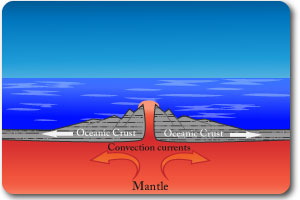
Destructive Boundaries
- Oceanic & continental plates collide. The oceanic plate is denser and so sinks under the continental plate.
- As the oceanic plate sinks it takes some sand, water and other materia from the sea bed with it. This melts and is gaseous which causes it to force its way up to the surface as a volcano.
- The continental plate crumples at the edge creating fold mountains in addition to the volcanoes.
Collision Boundary
- Convection currents in the mantle pull two plates of continental crust together.
- Since both crusts are made of the same material and have equal density neither subducts. They crumple up.
- This process creates fold mountains. There are no volcanoes at these boundaries but earthquakes occur.
- Example: the Himalayas.
2. Volcanoes
Types of Volcano
- Shield : gentle sloping, created by basic lava (travels along way before solidifying). Found at constructive boundaries.
- Composite : alternating layers of acid lava & rock/ash create the classic conical shape. Found at destructive boundaries.
- Ash & cinder : Alternating layers of ash & cinder compacted.
- Fissure : volcanoes running along a crack in the crust, usually a constructive boundary.
- Caldera : Crater volcano created after volcano collapses in on itself having emptied the magma chamber.
- Dome : steep sided volcano created by acid lava which cools before it has travelled far.
- Destructive boundary volcanoes are often cone shaped and explosive.
- Constructive boundary volcanoes are often more gently sloped and have less violent erruptions.
.jpg)
Volcanic Features
Objective: be able to correctly label the key features of volcanoes and relate them to the increased risk they pose to human settlements.
- Volcanoes vary in shape and structure depending on the reason for their existence.
- Secodary vents (fumaroles) occur when magma and gases force their way through weaknesses in the main volcanic structure.
- Lava, ash, cinders and smoke may be ejected from the vent.
- Draw and label a simple diagram of a volcano and the ejected material.
- Make simple sketch diagrams showing fissure, dome and ash-cinder volcanic structures.
- Using Figure 2.0, describe the location of the Pacific Ring of Fire and explain why this area has this name.
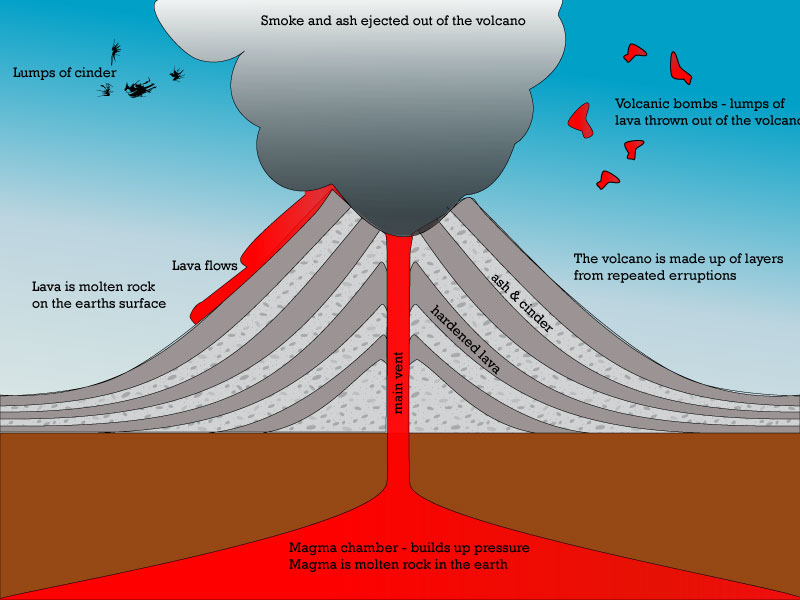
Costs & Benefits of Volcanic Environments
Negative Impacts
- Volcanic eruptions can cause significant damage and loss of life.
- Lava flows destroy vegetation buildings and roads.
- Ash can smother plants, cut out light in the atmosphere, disrupt air travel and cause respiration problems for people.
- Eruptions often cause earthquakes as pressure is released.
- Volcanoes with ice near the peak, or crater lakes can cause devastating mud flows as the water mixes with loose ash.
- Gas released from volcanoes can travel down the slopes silently killing people and animals.
Positive Impacts
- Volcanoes can bring environmental and socio-economic benefits.
- Fertile soils: ash and lava contain many minerals and nutrients that weather to form fertile soils which can be used very effectively for farming.
- Sulphur deposits: sulphur is mined and sold by the people living close to volcanoes in Indonesia.
- Tourism: the volcanic scenery, crater lakes, hot spring and geysers attract tourists and create many job opportunities.
Case Study: Montserrat
Objective: be able to describe the main events and damage caused by the volcano. You should be able to suggest reasons for the extent of the damage.
Montserrat is an island in the Caribbean that unexpectedly suffered devastating eruptions.
- Using the google map shown to the right, describe the location of Montserrat on a regional scale.
- Draw a sketch map showing the location of the Sufriere Hills volcano within the island.
- Explain the cause of the volcano
- Describe the main effects/impacts of the eruptions
- Why did they cause so much damage on the island?
- Make a sketch of Figure 2.1 to show the hazard map and restricted zones that are in place on Montserrat since the eruption.
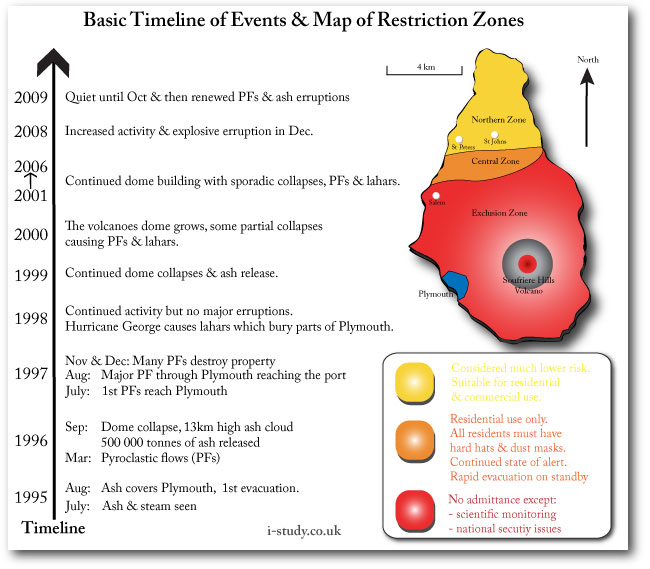
3. Earthquakes
Earthquake Characteristics
- Focus: the exact point at which the earthquake occurred- often deep in the ground.
- Epicentre: the point on the surface of the earth directly above the focus (so it can be located easily on maps).
- Seismic waves: these are the shockwaves that move outwards from the focus. Their energy disipates the further they travel.
- Seismometer: instrument that measures the magnitude of earthquakes.
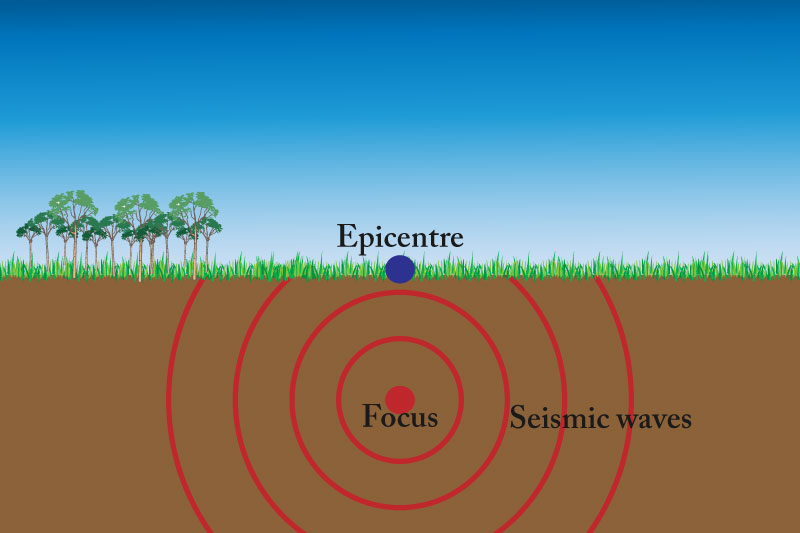
Risk factors and Earthquakes
Objective: Demonstrate an ability to to identify factors that can affect the scale of a disaster and be able to link them to levels of development.
- Watch Video 2.1.2
- Describe why older building tend to suffer more damage in earthquakes than newer ones.
- Why do buildings built on soft land suffer more than those with foundations on rock?
- Why can hospitals outside towns add to the problems?
Measuring Earthquakes
- Seismometer: a machine that records vibrations in the earth.
- Seismograph : the print out/graph produced by the seismometer.
- Richter scale : the sale traditionally used to record the magnitude of an earthquake.
- Movement Magnitude Scale: the scale often used currently to record the magnitude of earthquakes (it is more accurate for large earthquakes than the Richter scale.
Case Study: Haiti
Cause & Effect of the Haiti Earthquake
Objectives:
- Understand the cause of the Haiti earthquake.
- Demonstrate an ability to interpret information shown in photographs.
- Demonstrate analytic and reasoning skills in relation to development and disaster impacts.
- Describe the location and cause of the earthquake.
- Go to this page BBC bitesize. Describe the key facts about the damage it caused.
Responses to the Earthquake
- Watch Videos 2.1.3 and 2.1.4
- Go to these links Guardian: Haiti 2015 and Haiti then & now .
- How well has Haiti recovered from the earthquake?
- Describe three reasons why there are still lots of problems in Haiti 5 years on from the earthquake.
Extended Writing Task
Explain why the less developed a country is the more it is likely to suffer if an earthquake occurs. (you should write about a page in your book to answer this. Factors to include: preparation, emergency response, rebuilding/reconstruction.
4. Revision
Revision Guides
Cambridge IGCSE Geography
Website by Paul Christmas
Updated 31 May 2024
InThinking Subject Sites
Subscription websites for Cambridge IGCSE teachers & their classes
Find out more
- thinkigcse.net
- IGCSE Economics
- IGCSE History
- IGCSE Mathematics
InThinking Subject Sites for Cambridge IGCSE Teachers and their Classes
Supporting igcse educators.
- Comprehensive help & advice on teaching IGCSE.
- Written by experts with vast subject knowledge.
- Innovative ideas on ATL & pedagogy.
- Detailed guidance on all aspects of assessment.
Developing great materials
- More than one million words across 4 sites.
- Masses of ready-to-go resources for the classroom.
- Dynamic links to current affairs & real world issues.
- Updates every week 52 weeks a year.
Integrating student access
- Give your students direct access to relevant site pages.
- Single student login for all of your school’s subscriptions.
- Create reading, writing, discussion, and quiz tasks.
- Monitor student progress & collate in online gradebook.
Meeting schools' needs
- Global reach with thousands of users worldwide.
- Use our materials to create compelling unit plans.
- Save time & effort which you can reinvest elsewhere.
- Consistently good feedback from subscribers.
For information about pricing, click here
Download brochure
- Paper 1 - Case Studies
This page provides a quick link to revision pages on the case studies. They are currently being added.
To access the entire contents of this site, you need to log in or subscribe to it.
Alternatively, you can request a one month free trial .
Cambridge IGCSE Geography Revision
A guide to the Cambridge IGCSE Geography Syllabus
Other Revision Websites
- IGCSE Biology
- IGCSE Chemistry
Wednesday 20 July 2016
Case study: an earthquake and a volcano, 3 comments:.

I'm very much inspired when I've visited your blog. Your blog is really informative. Hope you will continue with new article. Geography curriculum
very useful
Our blog is very informative thumps up
- 0 Shopping Cart

Sakurajima Case Study
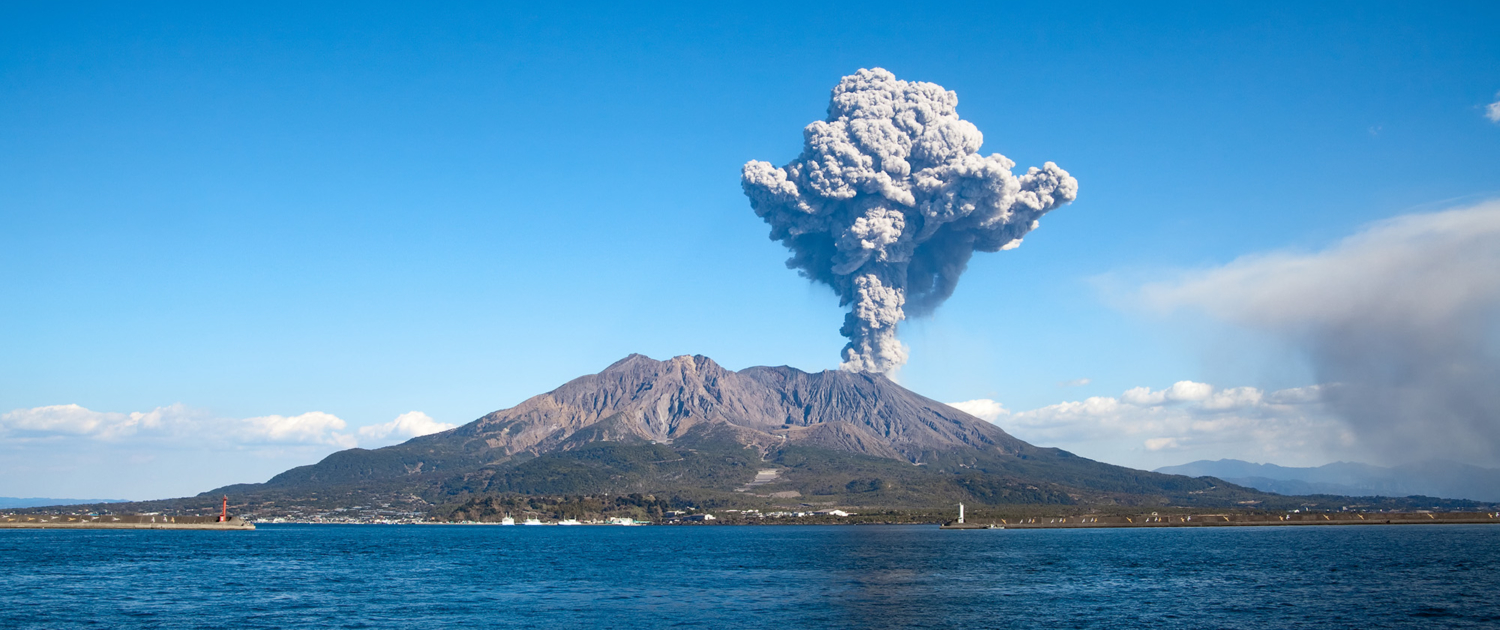
This case study has been developed to support students studying Edexcel B GCSE Geography.
Japan is located on a convergent plate boundary where the Eurasian plate is subducted by the Pacific and Philipinnes plates, causing a series of volcanoes.
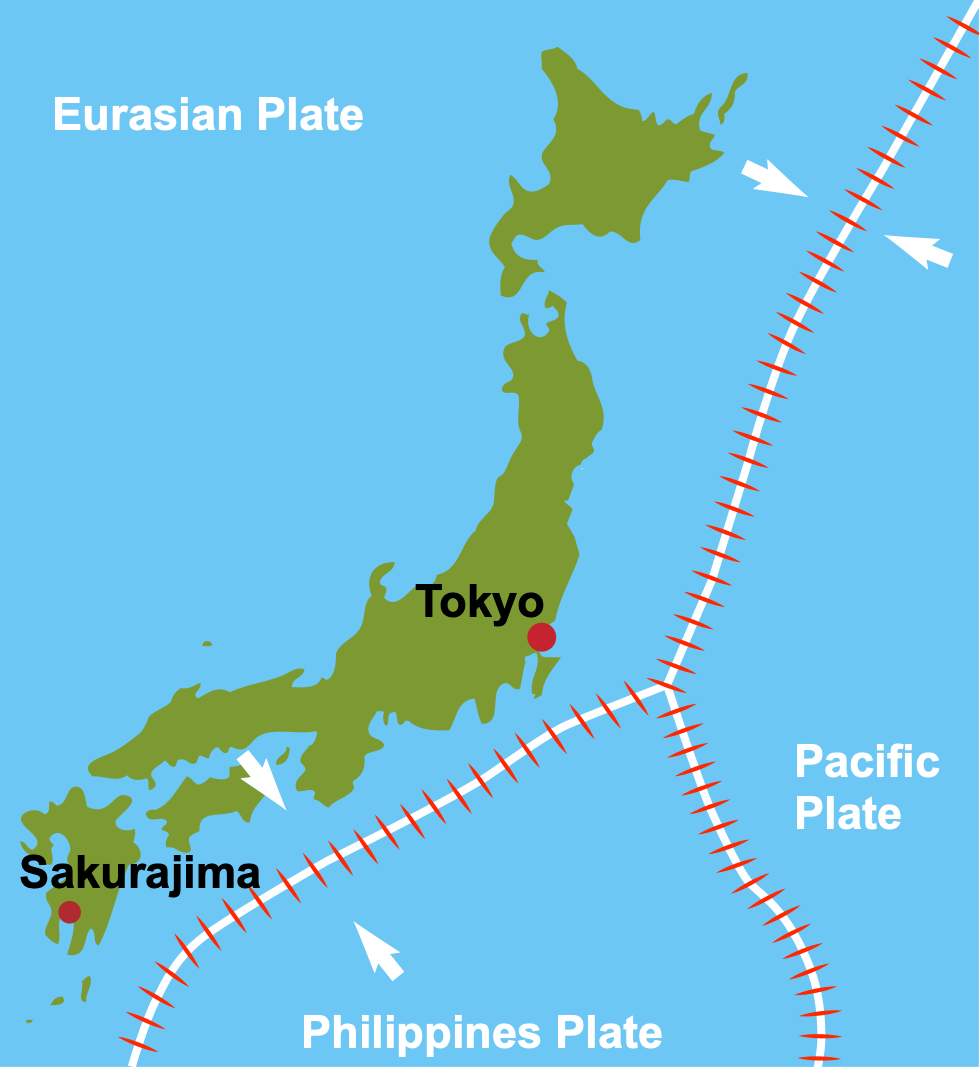
A map to show the tectonic setting of Japan and the location of Sakurajima
Sakurajima, Japan’s most active volcano , is located on the southern island of Kyushu and has erupted since the 1950s, sometimes over 200 times a year. As it is situated on a convergent plate margin, Sakurajima is a stratovolcano formed from layers of lava and ash. Eruptions are explosive, producing large volumes of ash, pyroclastic flows, volcanic bombs and poisonous gases. The lava is andesitic, meaning it has a high gas content and is very viscous (thick).
What are the Primary Impacts of Sakurajima?
The primary effects of a volcanic eruption are those caused instantly. These are directly linked to the type of volcano and eruption.
The primary effects of the Sakurajima eruptions include:
- Approximately 30km³ of ash erupts from the volcano annually, causing damage to crops and electricity lines. To avoid disruption, ash regularly needs to be cleared from urban areas.
- Ash reduces visibility, making roads unsafe for driving. Air travel is also disrupted as ash poses a risk to aeroplane engines.
- Eruptions of lava and ash have destroyed homes and crops in the past.
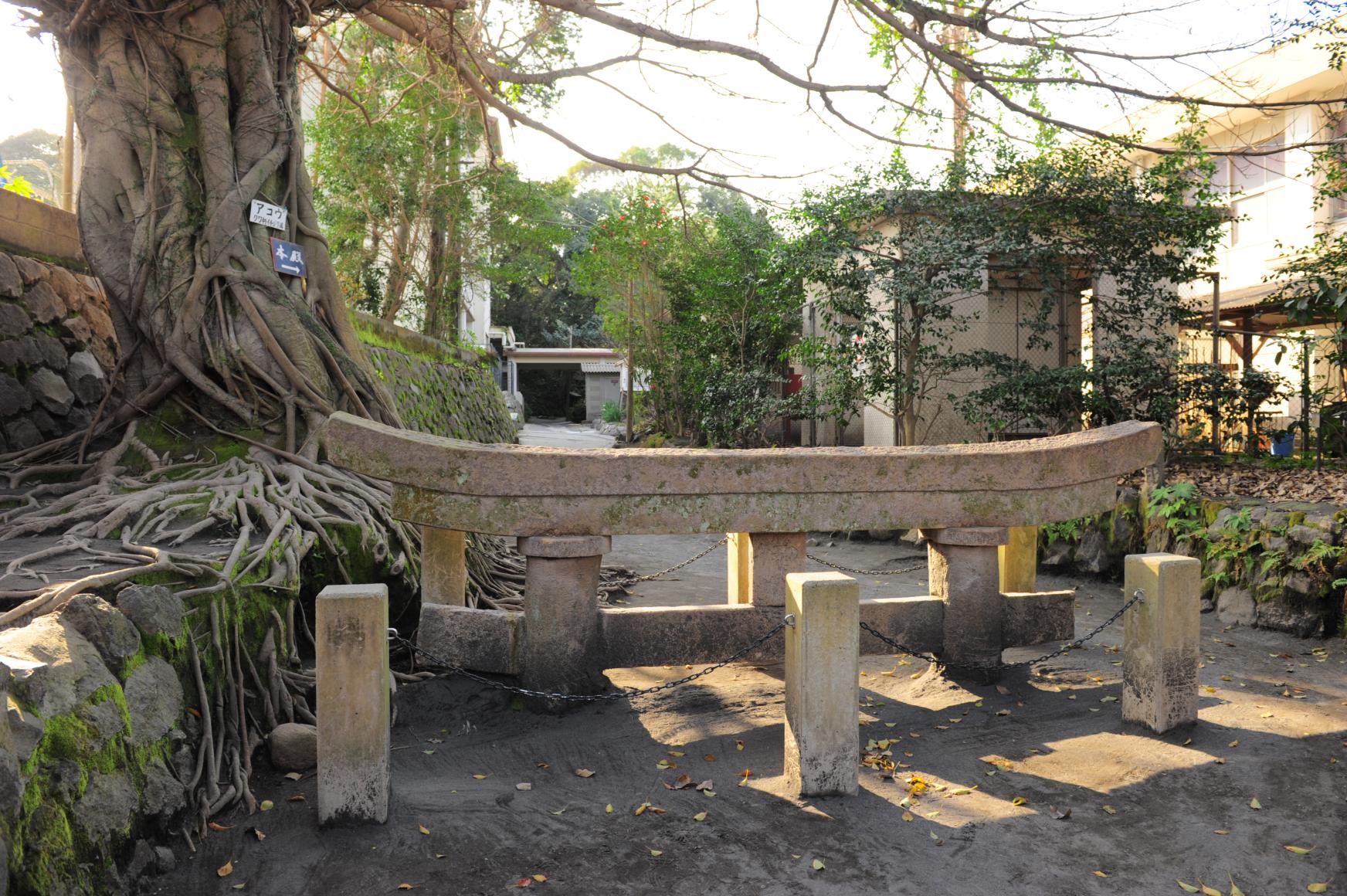
The Torii gate of Kurokami Shrine
- Strong earthquakes have occurred during violent eruptions. Fifty-eight people died from an earthquake triggered by Sakurajima’s last major eruption in 1914.
- Shock waves caused by the eruption of Sakurajima have shattered windows over 10km away from the volcano.
- During violent eruptions, volcanic bombs have been thrown over 3km from Sakurajima, cracking car windshields.
What are the Secondary Impacts of Sakurajima?
The secondary effects of a volcanic eruption are those that occur in the hours, days and weeks after an eruption.
The secondary effects of the Sakurajima eruptions include:
- Continual ashfall from the volcano has caused respiratory problems such as asthma.
- Studies have linked volcanic emissions in the area to increased cancer rates.
- Crops have been damaged by acid rain caused by gases emitted by the volcano combined with rainfall.
- The soil around the Sakurajima is very fertile due to its volcanic soil. This has supported the growth of the tea and rice industry in Kagoshima, the region overlooked by the volcano.
- The area is a major tourist destination due to the volcano, its national park status, scenery and hot springs. This has brought money to the area and has created many jobs.
How are Sakurajima’s Hazards Managed?
Management of volcanic hazards includes short-term relief (shelter and supplies) and long-term planning (trained and funded emergency services), preparation (warning and evacuation ; building design) and prediction .
Japan is a developed country; therefore, it can afford to finance monitoring , protection and evacuations.
Short-term relief
Residents local to Sakurajima are instructed to evacuate when alert levels are raised. For example, in 2015, residents closest to the volcano had to evacuate when alert levels were increased to four (out of five). Evacuation cards were issued so the authorities could monitor who had evacuated and where they had evacuated.
Ash bags are issued to residents during periods of high ashfall to remove ash from their properties, including roofs and pavements. The bags are then collected from residential ash collection areas by the council and disposed of.
Residents wear masks and close windows during periods of high ashfall. In addition, during periods of high activity, areas close to the volcano are declared off-limits to tourists and residents to protect people from poisonous gases and volcanic bombs.
People use the concrete lava bomb shelters around the volcano to protect themselves from being hit by material ejected from the volcano during unexpected eruptions.
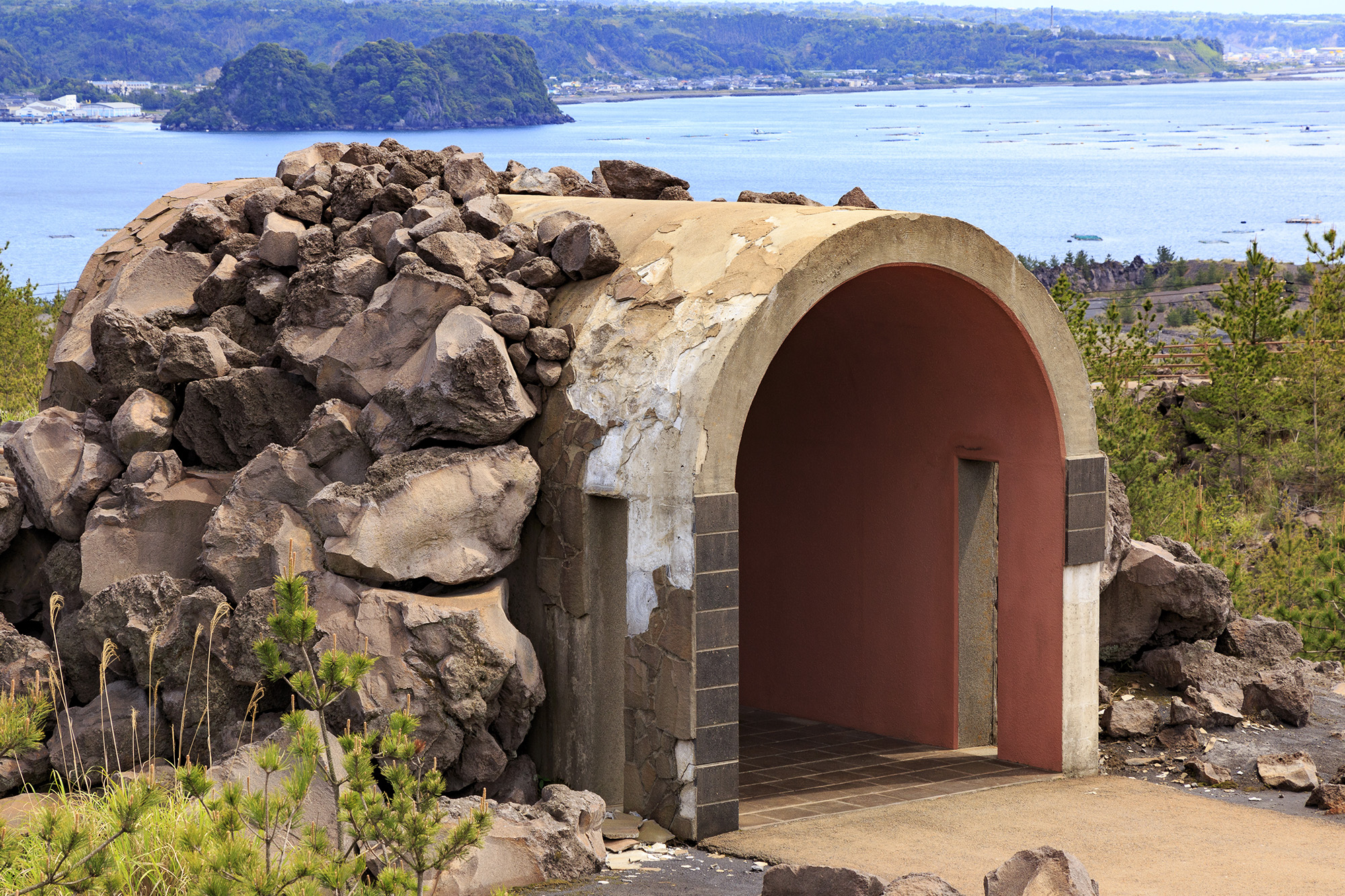
A lava bomb shelter close to Sakurajima
Long-term planning
Preparation
Several shelters have been constructed to offer protection during and after eruptions. These are signposted so people can get to them quickly.
Concrete channels have been constructed to divert volcanic mudflows, known as lahars, from developed areas.
A warning scale of 1-5 has been developed, so people know when to evacuate. In addition, local people have been directed to have evacuation kits available that include hardhats to protect people from volcanic material.
There are annual disaster drills for residents and emergency services to practice evacuation. In addition, a 2km zone surrounding the volcano has been established that prohibits people from getting too close.
An evacuation plan has been developed and shared with local people, so they know the procedures they must follow during an eruption, including which ports to use for evacuation.
The volcano is closely monitored to that eruption predictions can be made. Gas levels are monitored by aircraft above Sakurajima. When gas levels are high, this can indicate an eruption is imminent. Seismometers are used to measure earthquakes associated with rising magma, and tiltmeters monitor the shape of the land for any bulges or ground swelling, signs of rising magma.

Premium Resources
Please support internet geography.
If you've found the resources on this page useful please consider making a secure donation via PayPal to support the development of the site. The site is self-funded and your support is really appreciated.
Related Topics
Use the images below to explore related GeoTopics.
Topic Home
Next topic page, share this:.
- Click to share on Twitter (Opens in new window)
- Click to share on Facebook (Opens in new window)
- Click to share on Pinterest (Opens in new window)
- Click to email a link to a friend (Opens in new window)
- Click to share on WhatsApp (Opens in new window)
- Click to print (Opens in new window)
If you've found the resources on this site useful please consider making a secure donation via PayPal to support the development of the site. The site is self-funded and your support is really appreciated.
Search Internet Geography
Top posts and pages.
Latest Blog Entries
Pin It on Pinterest
- Click to share
- Print Friendly

IMAGES
VIDEO
COMMENTS
Learn about and revise different types of volcanoes and their characteristics and effects with GCSE Bitesize Geography (Eduqas). ... Eduqas Case study - volcanic eruption - La Palma, 2021.
Mount Etna is a volcano. The reasons why Mount Etna is located where it is are complex. Here are some of the theories: One theory envisages a hot spot or mantle-plume origin for this volcano, like those that produce the volcanoes in Hawaii. Another theory involves the subduction of the African plate under the Eurasian plate.
Eyjafjallajokull is located below a glacier. The Eyjafjallajökull volcano erupted in 920, 1612 and again from 1821 to 1823 when it caused a glacial lake outburst flood (or jökulhlaup). It erupted three times in 2010—on 20 March, April-May, and June. The March event forced a brief evacuation of around 500 local people.
CAIE IGCSE Geography 0460 Case Studies Revision Notes - ZNotes. . . Customise theme. 🔒 For BOOSTERS. Best free resources for CAIE IGCSE Geography 0460 Case Studies including summarized notes, topical and past paper walk through videos by top students.
The eruption of Eyjafjallajökull in 2010 is a crucial example of how a volcanic event can have local and global impacts. The incident underscored the importance of preparedness, monitoring, and international cooperation in minimizing the effects of such natural disasters. It also highlighted the interconnectedness of our modern world and how a ...
Friction causes heat and the plate material melts forming magma. The magma rises to the surface through cracks in the crust. The cooling lava and ash build up forming a volcano. At destructive plate boundaries the lava tends to be sticky and produces explosive eruptions.
The Secondary effects of the Eruption. 2/3 of the island was covered in ash50% of the population were evacuated to the north of the island to live in makeshift shelters 23 people died in 1997 Volcanic eruptions, pyroclastic flows and lahars have destroyed large areas of Montserrat. The capital, Plymouth, has been covered in layers of ash and mud.
Revision notes on 2.1.6 Reducing the Impact of Earthquakes & Volcanoes for the CIE IGCSE Geography syllabus, written by the Geography experts at Save My Exams. ... Case Study: La Palma. Part of the Canary Islands, La Palma is located in the Atlantic Ocean off the coast of North Africa;
Terms in this set (14) Chances' Peak, Montserrat. Destructive boundary between the Caribbean and North American plate. mountain chicken frog. Belham valley. 100km/h. Why did the Haiti earthquake occur? Study with Quizlet and memorize flashcards containing terms like Location for volcano case study, On what plates is Montserrat located, Effects ...
Population and settlement - iGCSE Geography. Introduction to population; World Population Increase; Over-population and under-population; The main causes of a change in population size; ... White Island Volcano Case Study. New Zealand's Whakaari/White Island volcano erupted on Monday 9th December 2019. The strato or composite volcano ...
Volcano case studies. On 17th January 2002 Nyiragongo volcano in the Democratic Republic of Congo (DRC) was disturbed by the movement of plates along the East African Rift Valley. This led to lava spilling southwards in three streams. The primary effects - The speed of the lava reached 60kph which is especially fast.
An overview of all the case studies for the CIE IGCSE Geography Syllabus. Read on to attain full marks. Search. Search for: The Geography Study School Geographically on par for your A star. ... (e.g. 1 volcano, one earthquake, one river with certain features, one coastal area, one country with population change, urban vs. rural settlement, etc ...
Fissure: volcanoes running along a crack in the crust, usually a constructive boundary. Caldera: Crater volcano created after volcano collapses in on itself having emptied the magma chamber. Dome: steep sided volcano created by acid lava which cools before it has travelled far. Destructive boundary volcanoes are often cone shaped and explosive.
Revision notes on 2.1.1 Main Features of Earthquakes & Volcanoes for the CIE IGCSE Geography syllabus, written by the Geography experts at Save My Exams. ... At a time when the study of geography has never been more important, Bridgette is passionate about creating content which supports students in achieving their potential in geography and ...
Nyiragongo Case Study. This case study has been developed to support students studying Edexcel B GCSE Geography. Tectonic Setting and Location. Mount Nyiragongo is a composite volcano located in the east of the Democratic Republic of the Congo (DRC). The volcano consists of a huge (2km wide) crater, usually filled with a lava lake, and is only 20km away from the city of Goma.
Which one was the continental plate? South American. What was the speed of the pyroclastic flow? 120 km/ hr x2. What type of volcano was Chances Peak? Stratovolcano. What were the environmental impacts? -Gas, dust and material polluted the air. -Erratic volcanic eruption.
Assessment. Paper 1 - Case Studies. This page provides a quick link to revision pages on the case studies. They are currently being added. To access the entire contents of this site, you need to log in or subscribe to it. Alternatively, you can request a one month free trial. This page provides a quick link to revision pages on the case studies ...
Questions and model answers on 2.1 Earthquakes & Volcanoes for the CIE IGCSE Geography syllabus, written by the Geography experts at Save My Exams. ... Study Fig. 3.2, which is a map showing information about earthquakes which caused more than 10 000 deaths in different parts of the world (1900-2011).
regulations with no finance and few resources. •case study of a volcano: Eyjafjallajökull (Iceland) •causes for an eruption in Eyjafjallajökull: •lies on a constructive plate (North American and Eurasian) •plates move a few cm each year. •lies on a hotspot; raises temperature and quantity of the magma; needs to escape.
Sakurajima Case Study. This case study has been developed to support students studying Edexcel B GCSE Geography. Japan is located on a convergent plate boundary where the Eurasian plate is subducted by the Pacific and Philipinnes plates, causing a series of volcanoes. Sakurajima, Japan's most active volcano, is located on the southern island ...
Location and General. One of the five volcanoes in the Cascade Range in Washington State, USA. Caused by the oceanic crust (Juan de Fuca) plate subducting under the continental crust (North American plate). The oceanic crust was destroyed and formed magma which rose to the surface. Like the others, had been dormant for many years.
IGCSE Geography Case studies Theme 1- Population 1. A country which is over-populated : Bangladesh 2. A country which is under-populated : Australia 3. A country with a high rate of natural population growth : Bangladesh 4. A country with a low rate of population growth (or population decline) : Russia 5. An International migration : From ...
Study Figure 1, which shows the number of deaths in a range of earthquakes. State the deadliest earthquake. How did you do? Questions and model answers on 2.1 Earthquakes & Volcanoes for the CIE IGCSE Geography syllabus, written by the Geography experts at Save My Exams.